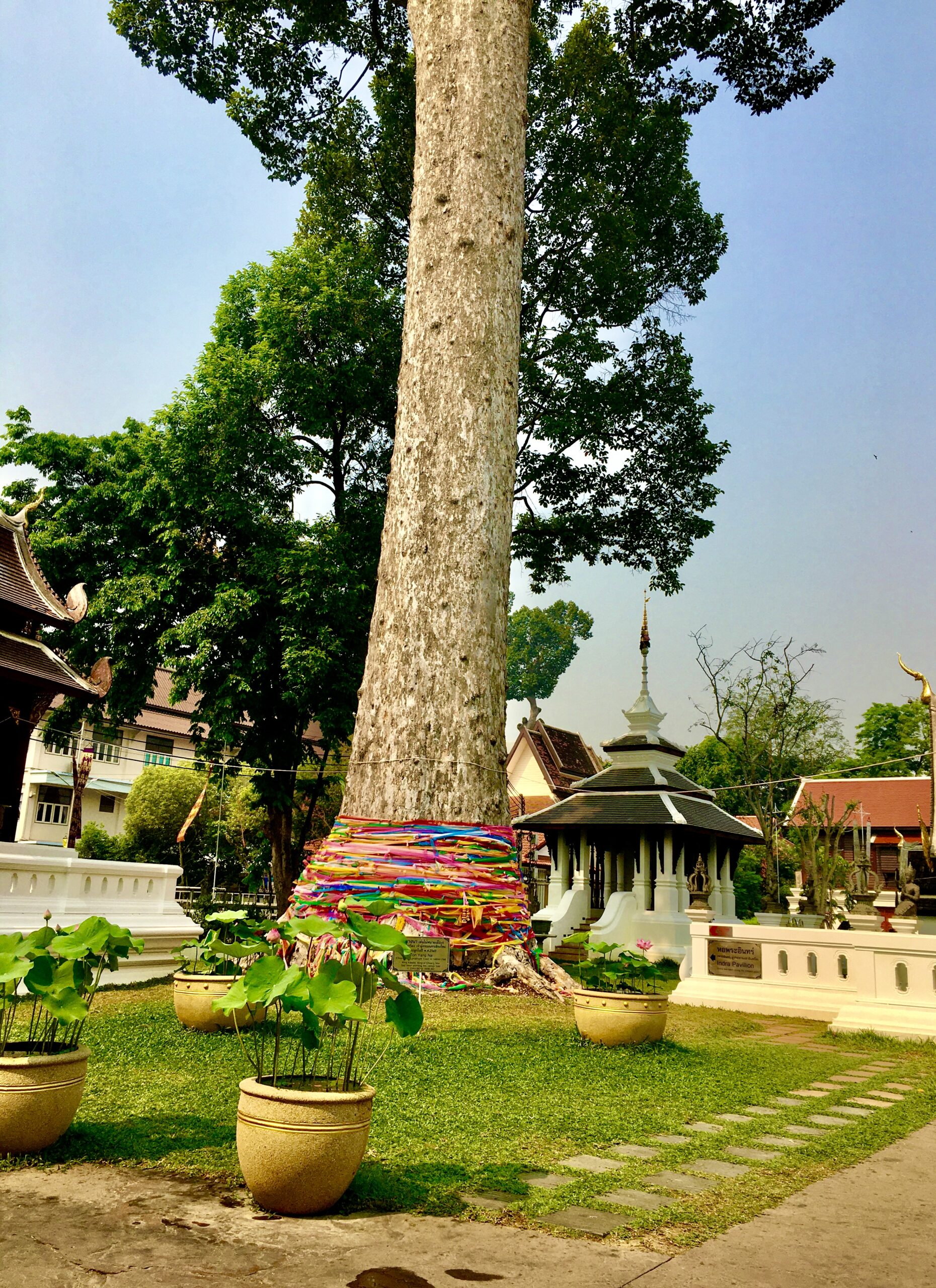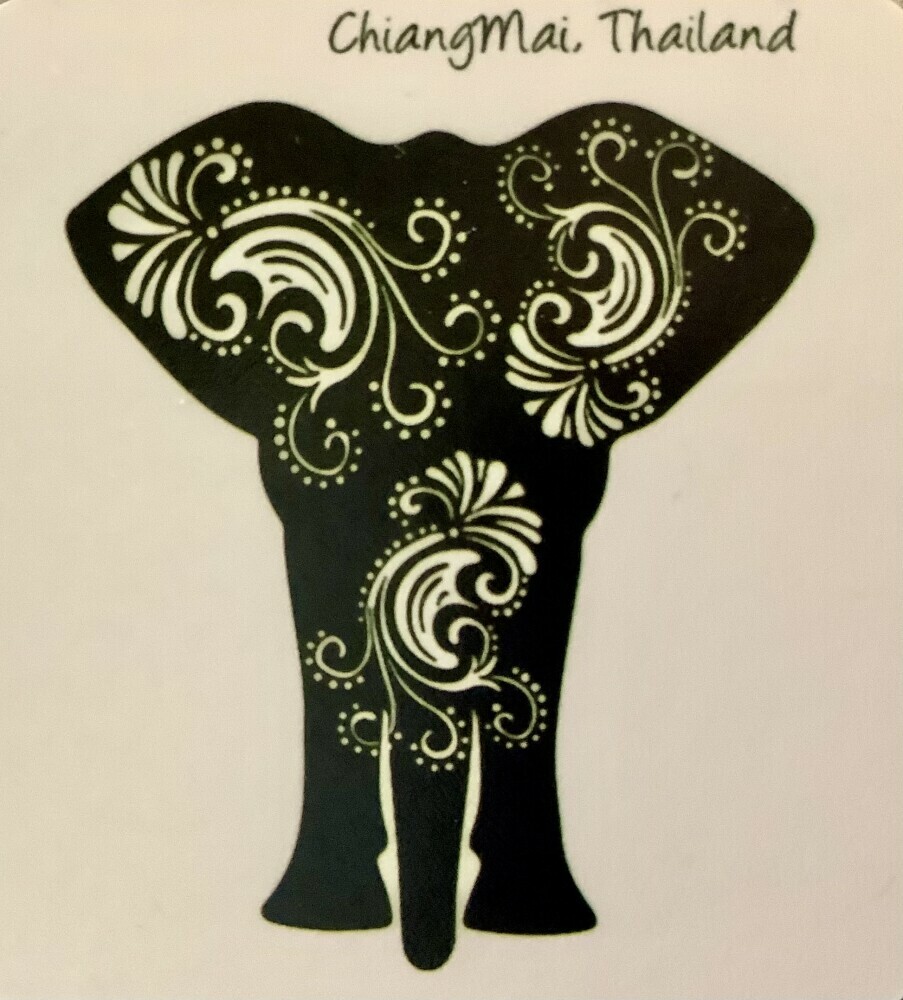
Chiang Mai;
To start, a small dollop of the history of this popular tourist city. The city was founded in 1294 by Mangri, the first king of the Lana Kingdom. Then the city was abandoned between 1776 and 1791, with the modern city municipality dating to 1935. The emergence of all the different kingdoms into the modern Kingdom of Thailand is uniquely interesting but would take volumes, so we’ll leave it at that. (See my article on Ayutthaya) This city is located in the Thai highlands a little over 400 miles north of Bangkok. It is also the country’s second-largest city with over a million people if you include the urban areas.
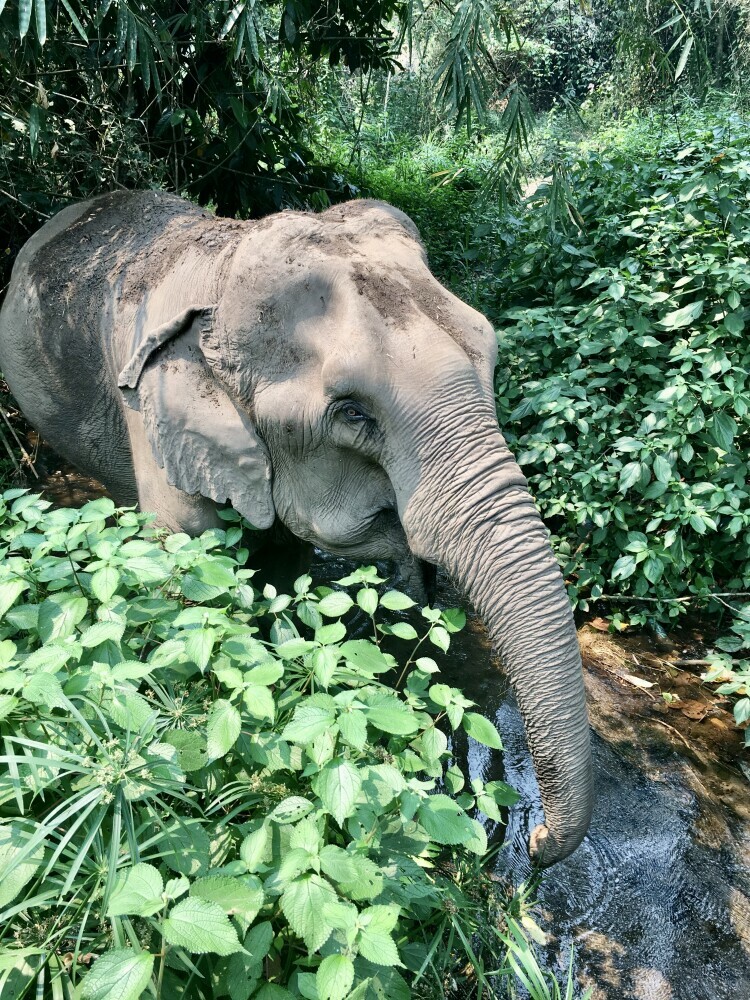
On our first day, we had an amazing day at Eco-Valley Elephant Sanctuary https://todddyprints.com/birthday-with-elephants/ After returning to our hotel in the center of the old city we cleaned up and hit Chiang Mai’s Wua Lai Walking Street. Saturday night is the big night…. and this market proved to be exceptional. All Thai cities and towns have night markets…often more than one. There are a dozen or more night markets in Chiang Mai. They include a wide variety of delicious food, entertainment, and great deals for shopping for clothing, jewelry, etc.
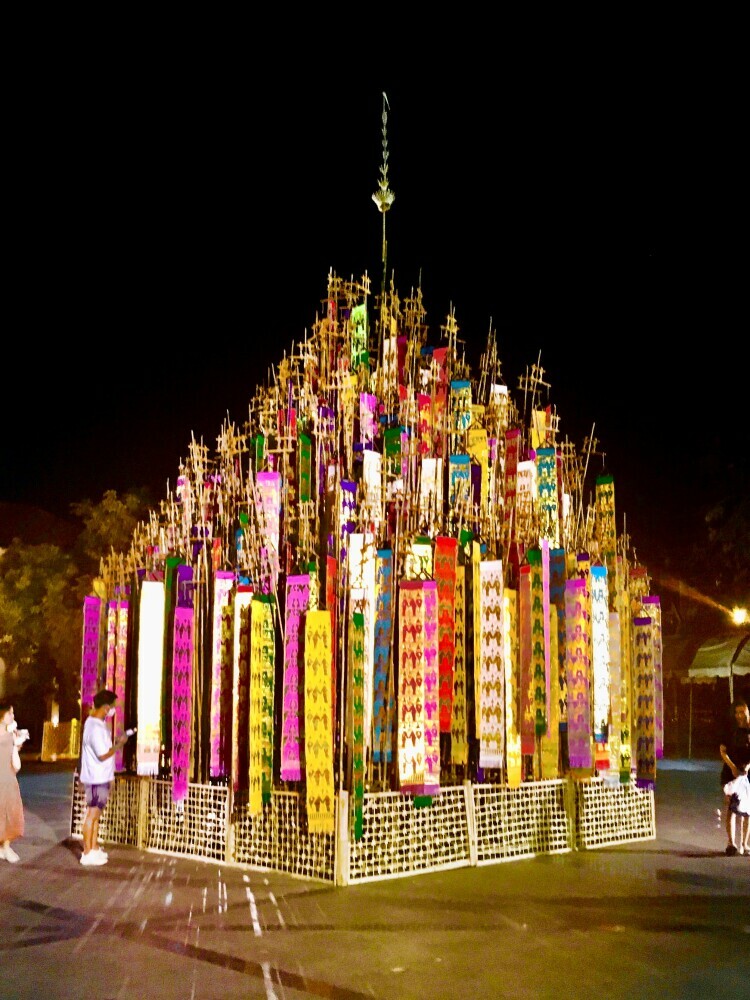
We visited the Kalare Night Market and Bazaar, which was close to our hotel the night before, and it was also exceptional. It is worth the extra effort to try a different one each night.
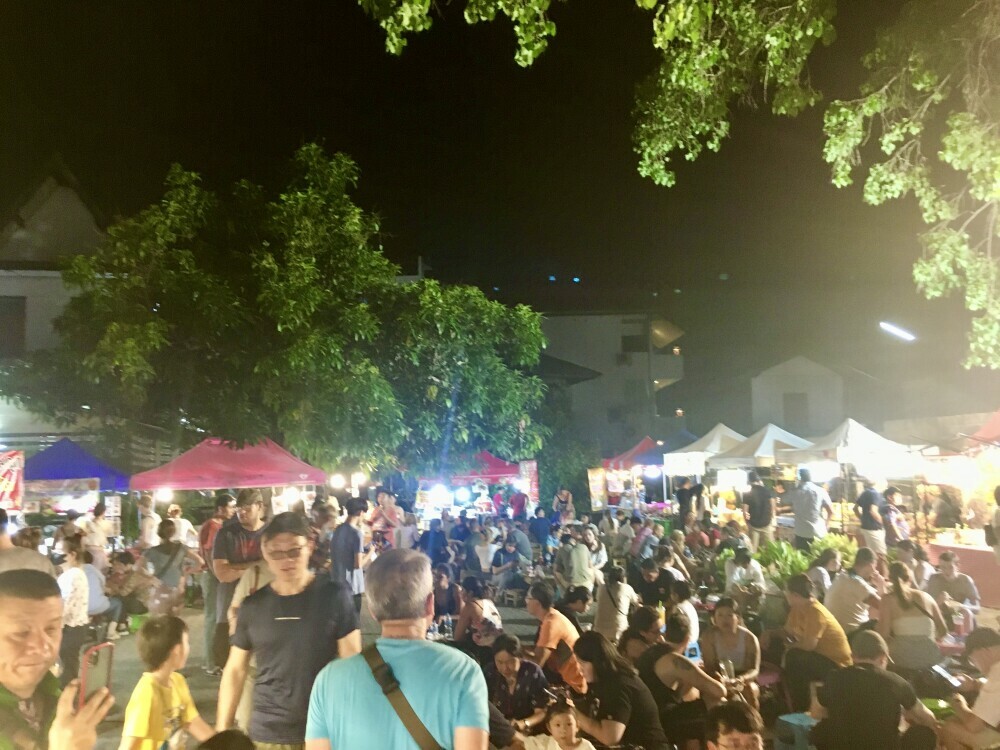 Busy night. The city was packed for Songkran Fest.
Busy night. The city was packed for Songkran Fest.
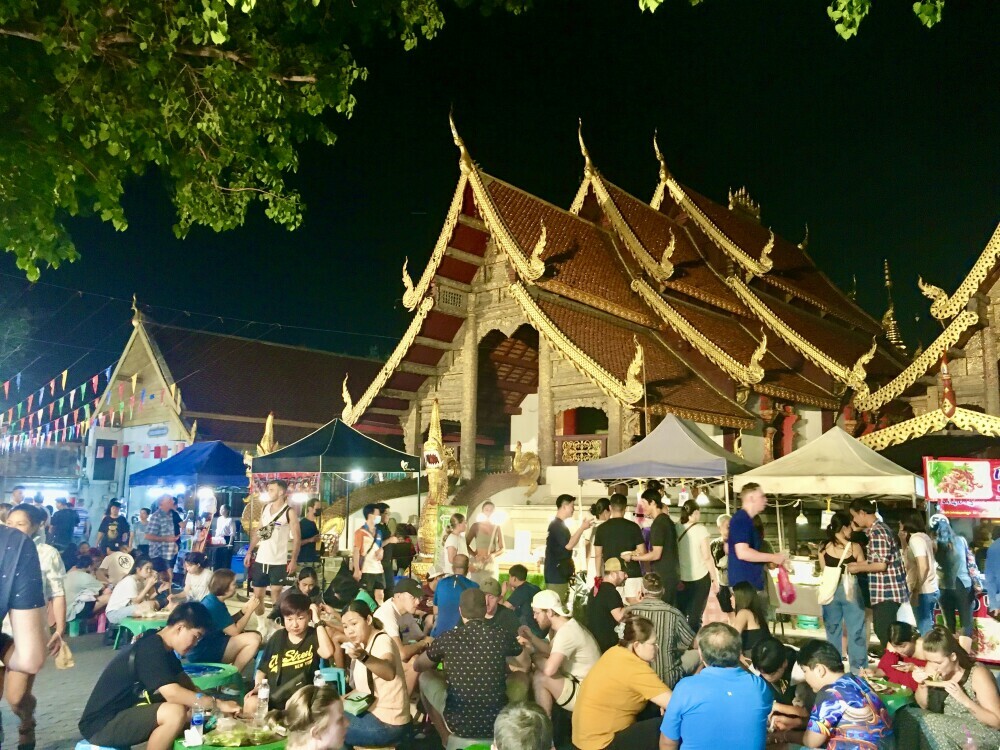 Dining in front of Wat.
Dining in front of Wat.
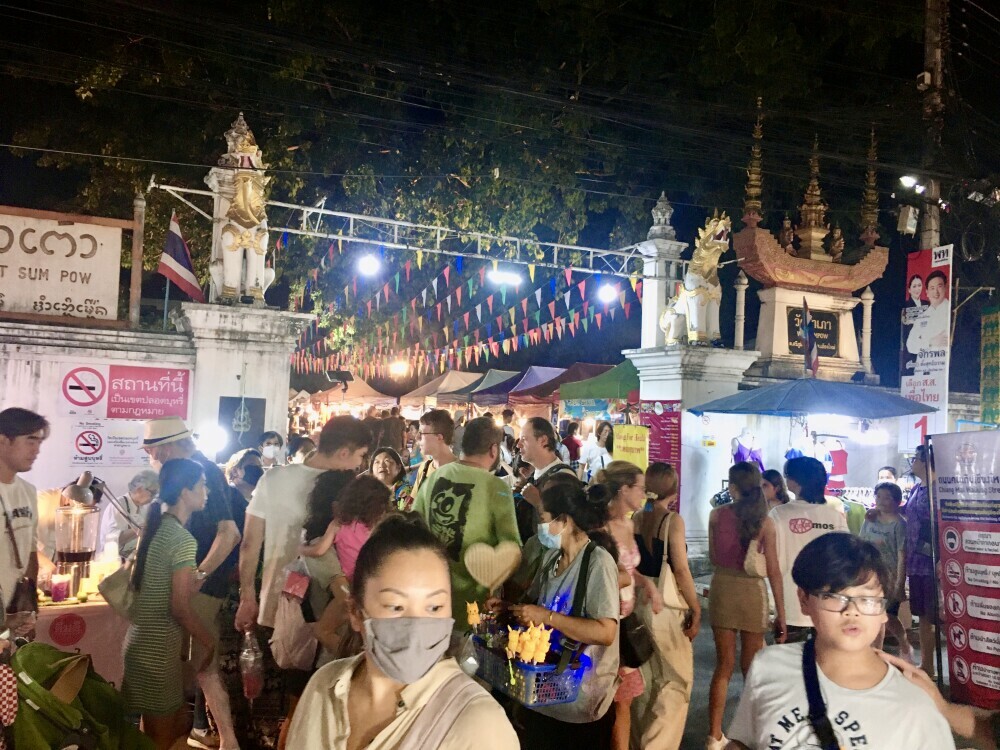 Just fearlessly dive right in.
Just fearlessly dive right in.
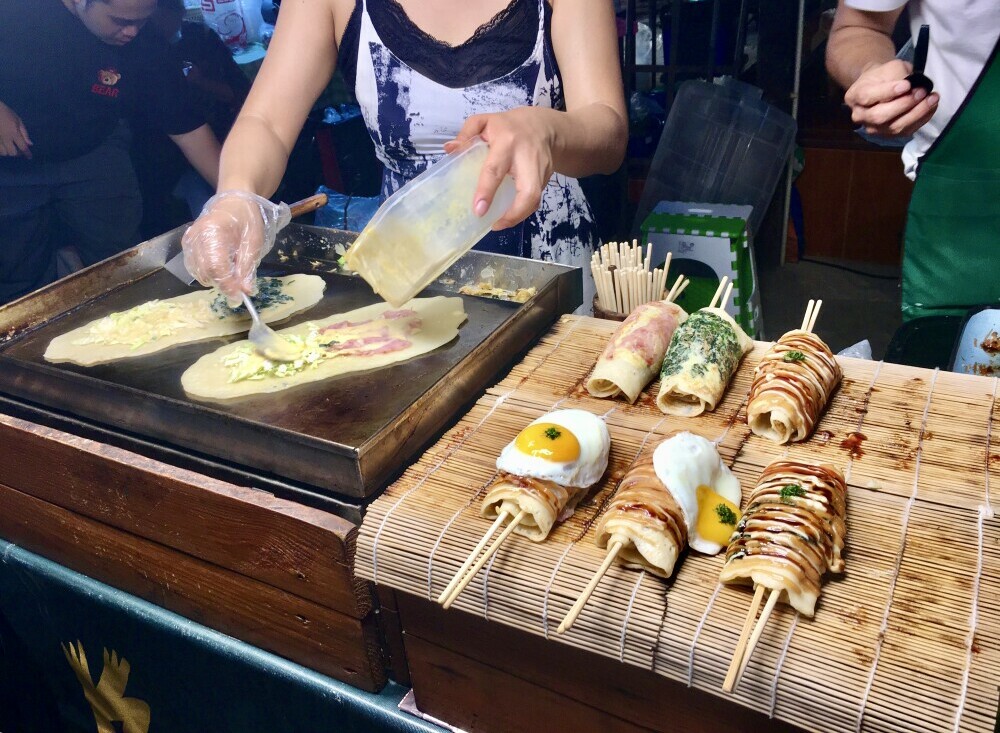 Crepe’s for my friends!
Crepe’s for my friends!
Our second day began with a tour around Chiang Mai, starting in a local market. We reviewed the fruits, vegetables, meats, fish/seafood, and flowers. Shopping is more of a daily thing here. Our guide pointed out several things that needed to be cooked and eaten within 24 hours. Flowers are also a common purchase in Thailand.
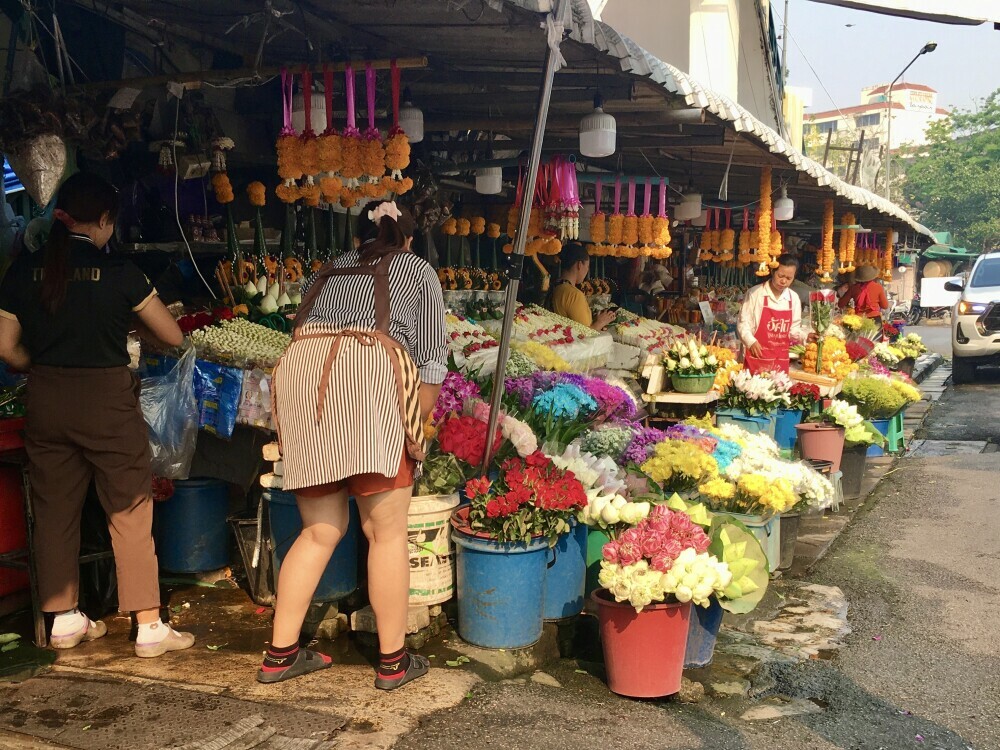 Flower Alley
Flower Alley
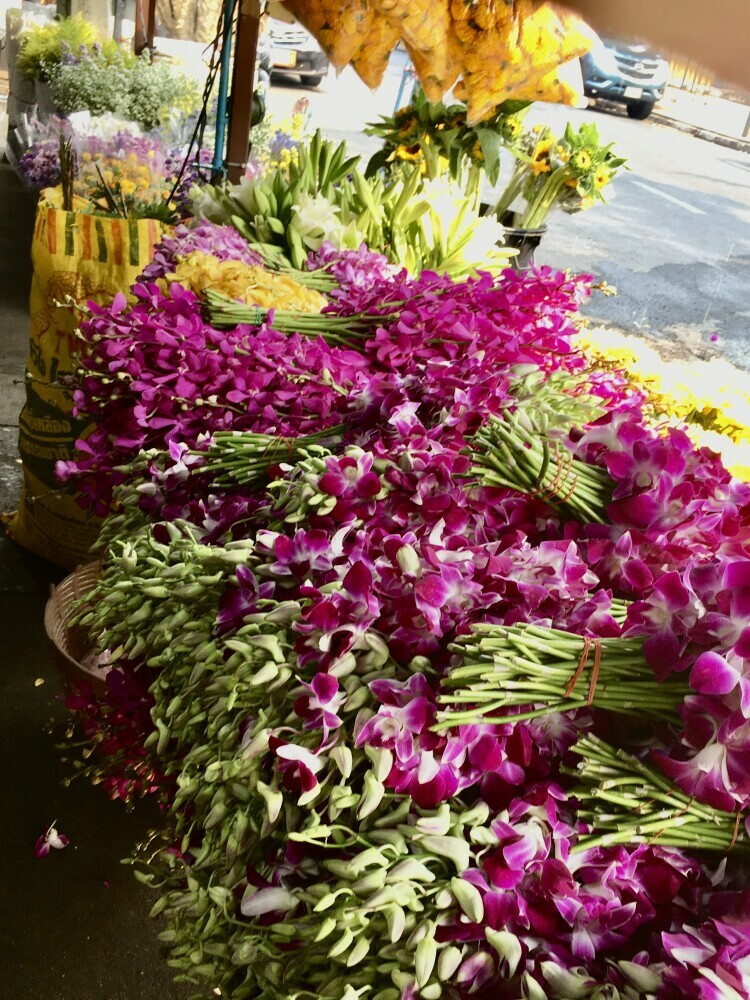 Orchids
Orchids
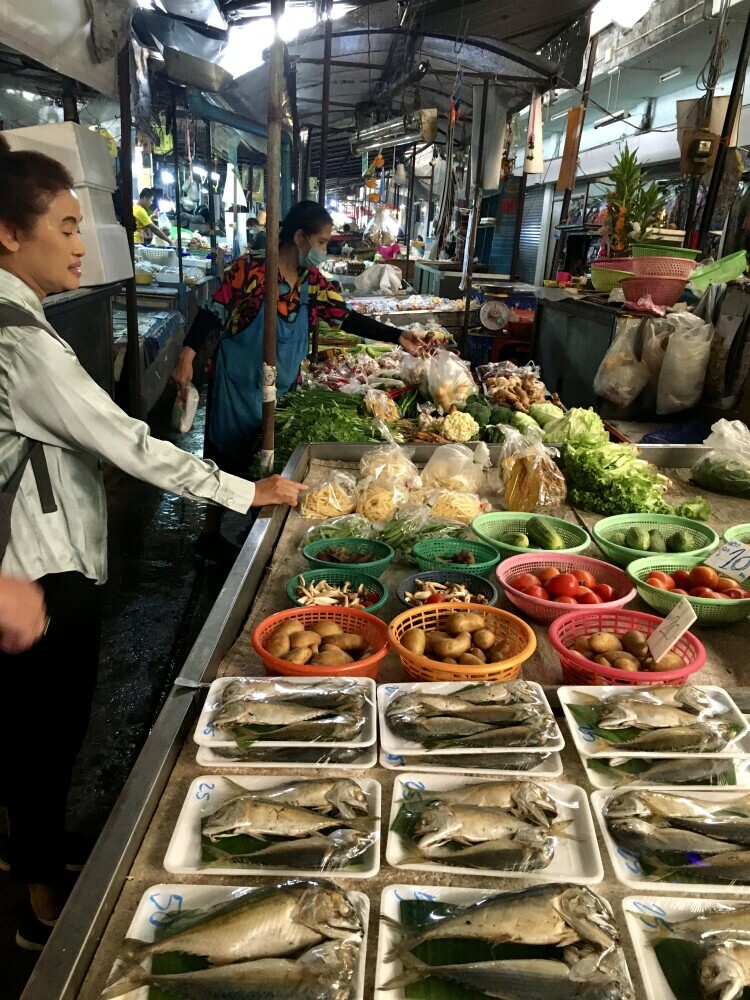 Our guide, explains bundles that contain all the flavoring for a dish.
Our guide, explains bundles that contain all the flavoring for a dish.
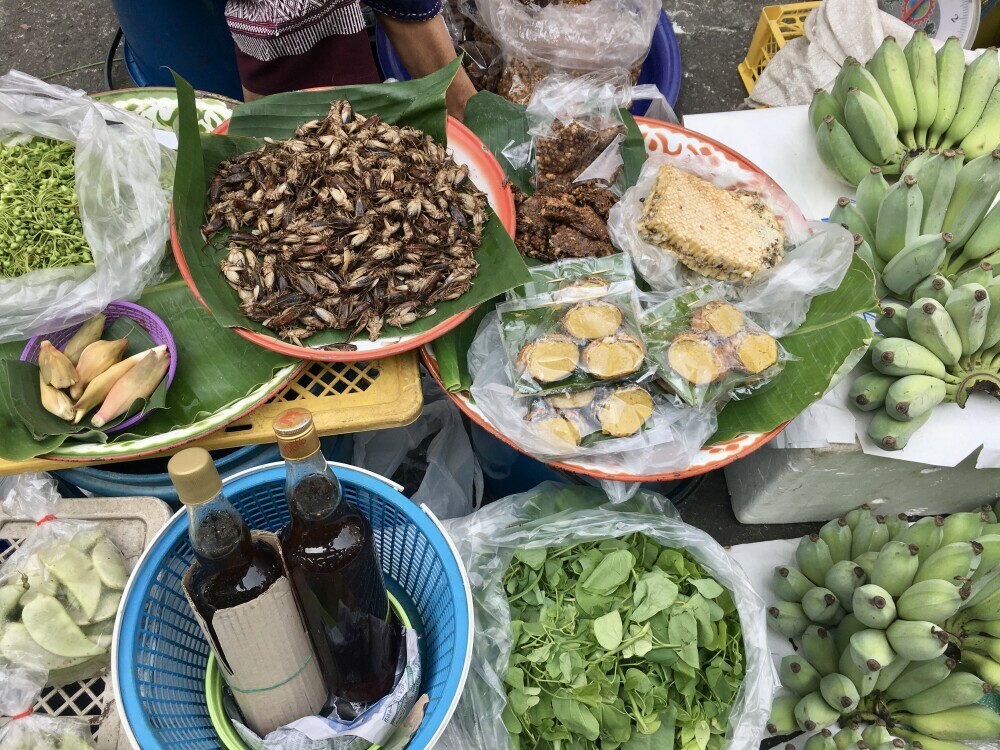 Grasshopper, grasshopper?
Grasshopper, grasshopper?
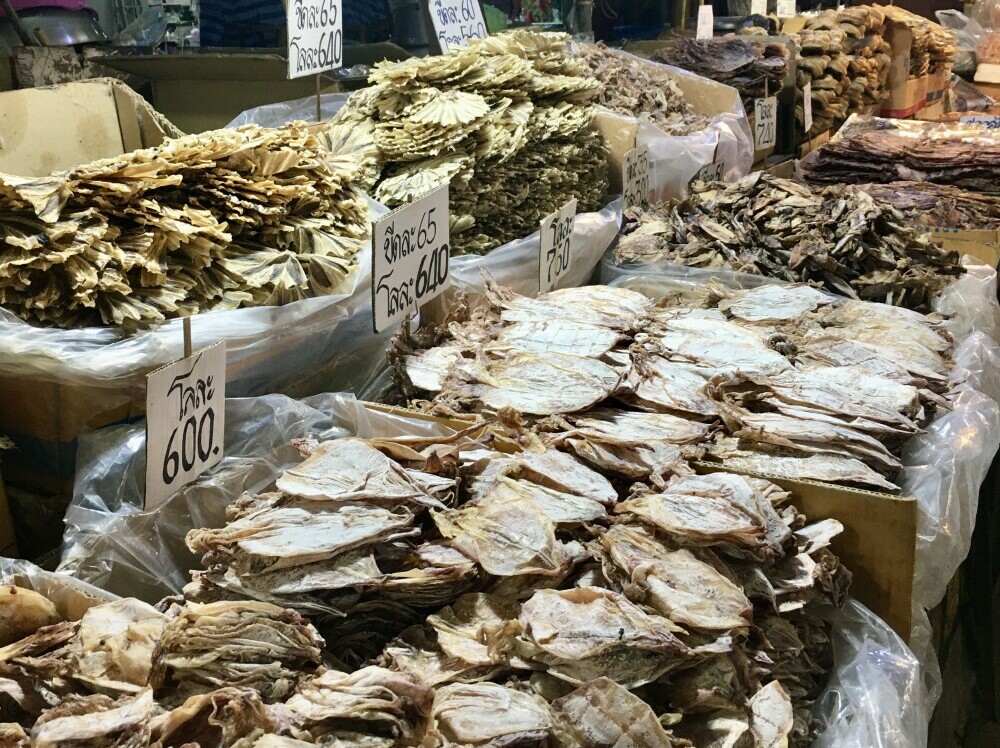 Dried and Smoked fishes
Dried and Smoked fishes
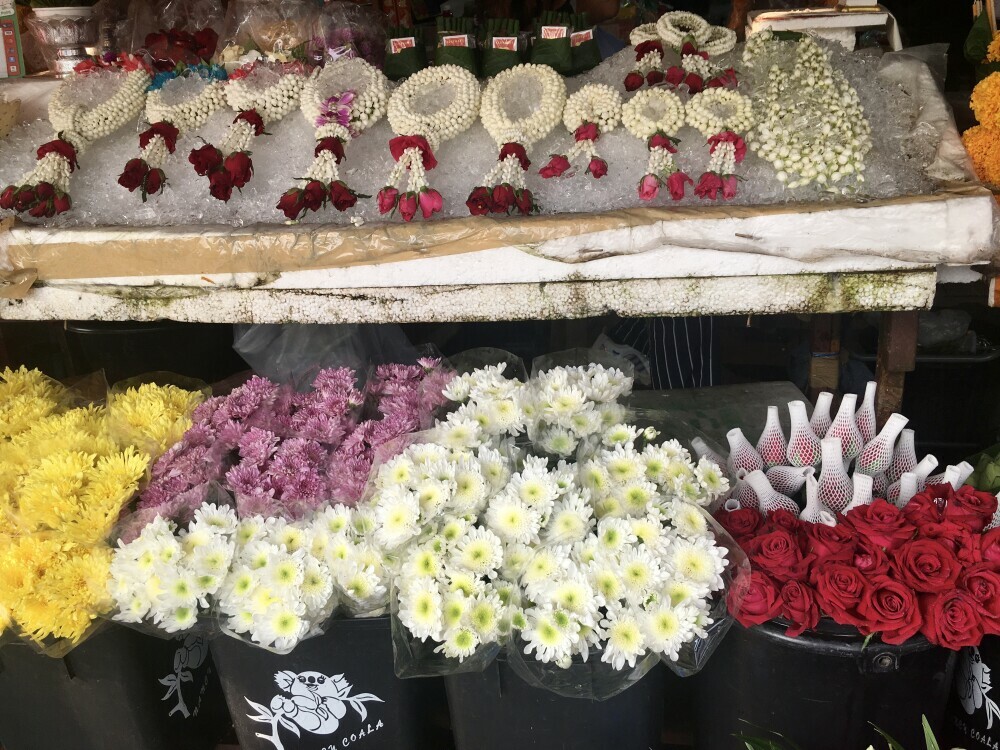 Phuong Malai’s on top row
Phuong Malai’s on top row
To show respect or offer good luck, Thais give jasmine necklaces or Phuong Malai…Elaborate little marigold and jasmine pagodas are hand-threaded with live flowers and used as offerings to Buddha in one of the dozens of temples just in the old city of Chiang Mai. Jasmine is used as an offering because the scent is so good it drifts up, all the way to the heavens and pleases the gods. It is a smell that makes us smile when we catch a whiff among all the many smells and odors on the streets in Thailand.
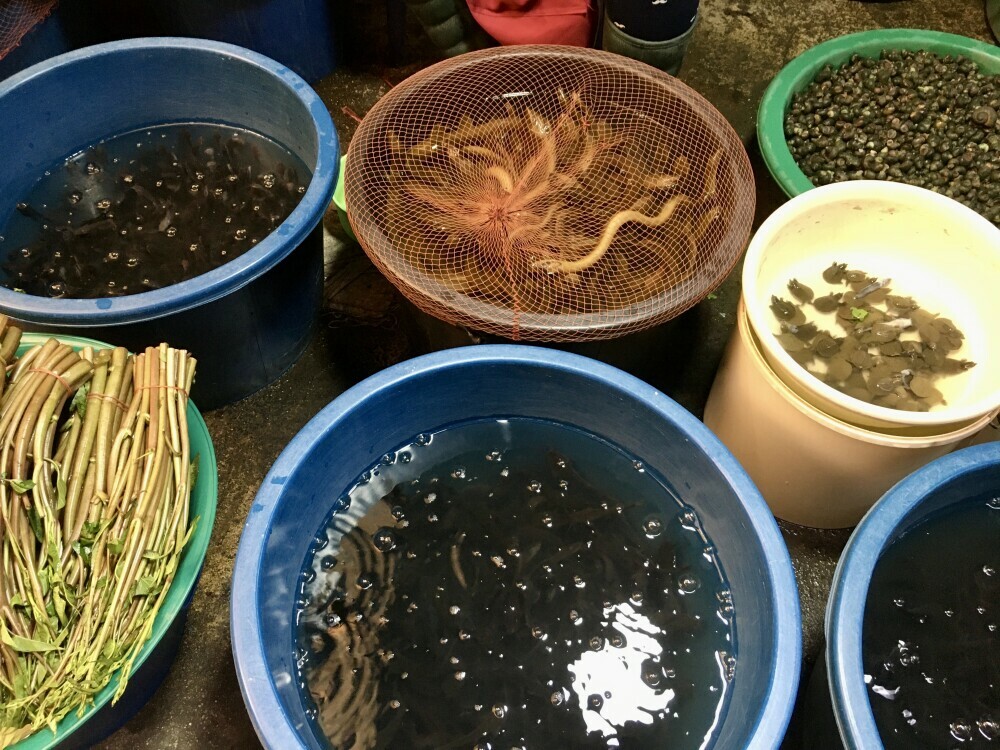 Take your pick, most wiggle.
Take your pick, most wiggle.
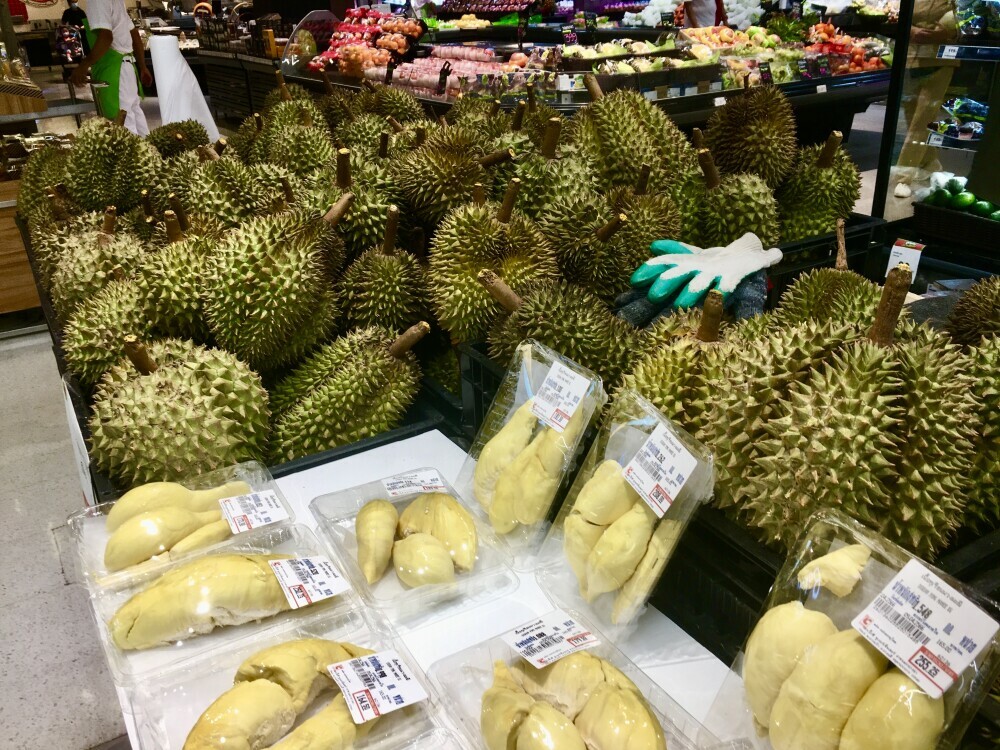 The Infamous Durian. It smells of rotting flesh, but those who like it are enthusiasts.
The Infamous Durian. It smells of rotting flesh, but those who like it are enthusiasts.
We visited several temples in Chiang Mai. As Buddhism is practiced in northern Thailand, there are 6 levels of heaven before you reach Nirvana. At each level, some rules must be kept and levels of study and devotion must be demonstrated so that you can move up to the next level. To reach the first level of heaven there are 5 rules: no cheating, no stealing, no lying, no killing, and no drinking too much. If you do additional things like care for your parents, you can earn your way into one of the higher heavens. Only monks who devote years of study and meditation have any hope of reaching the highest levels of heaven.
Wat Chedi Luang
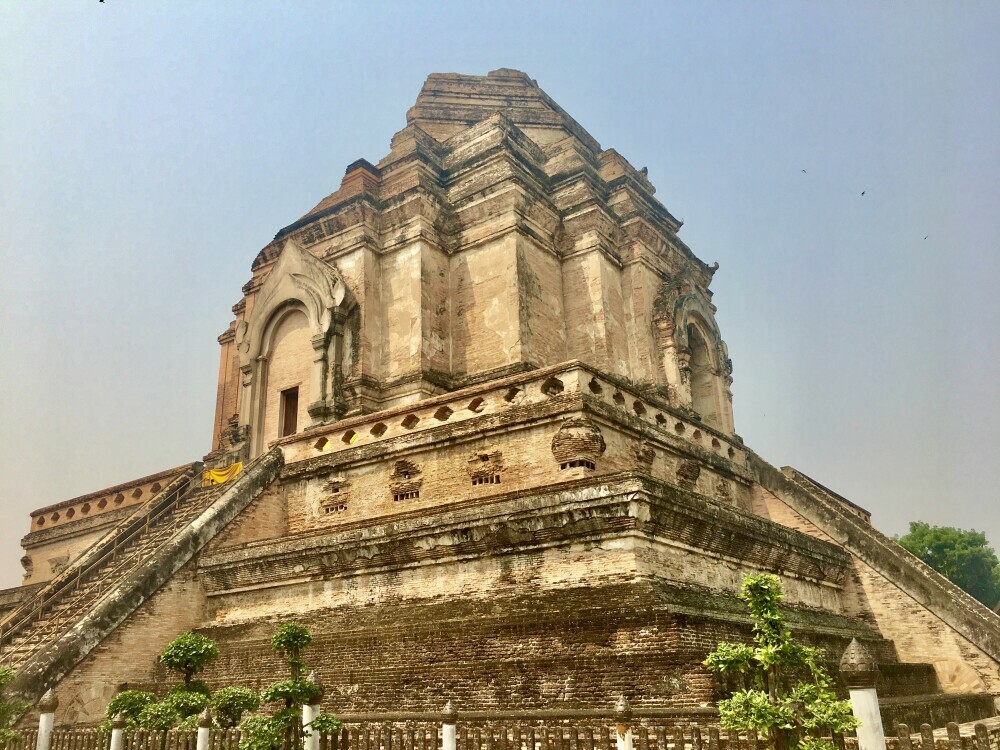
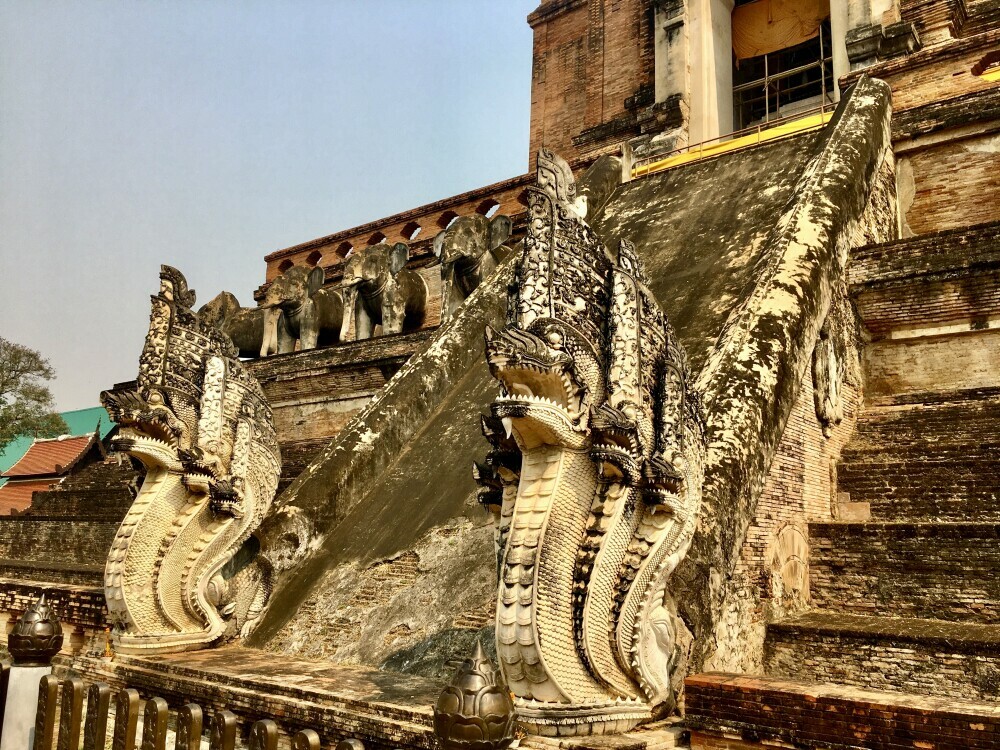
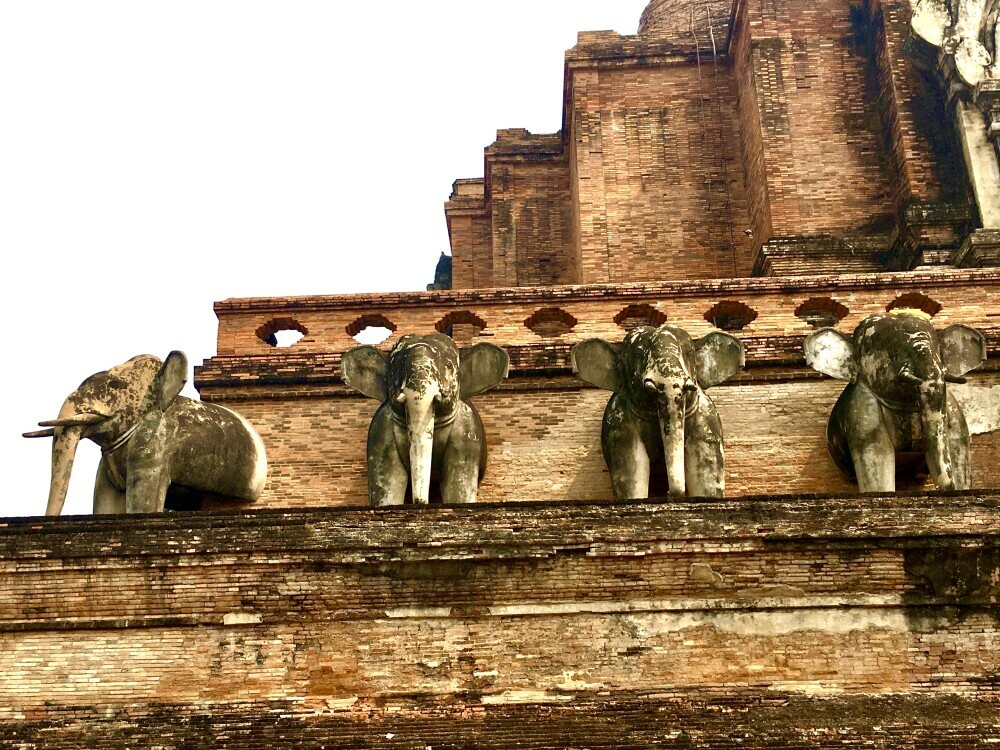 Their temples are covered with depictions of the important events in the life of Buddha. His birth, his enlightenment, his death. They have temples with “relics” from the important monks and Buddha. These are pieces of bones kept in small jars displayed around the statue of Buddha. These temples are built and supported by donations from the community.
Their temples are covered with depictions of the important events in the life of Buddha. His birth, his enlightenment, his death. They have temples with “relics” from the important monks and Buddha. These are pieces of bones kept in small jars displayed around the statue of Buddha. These temples are built and supported by donations from the community.
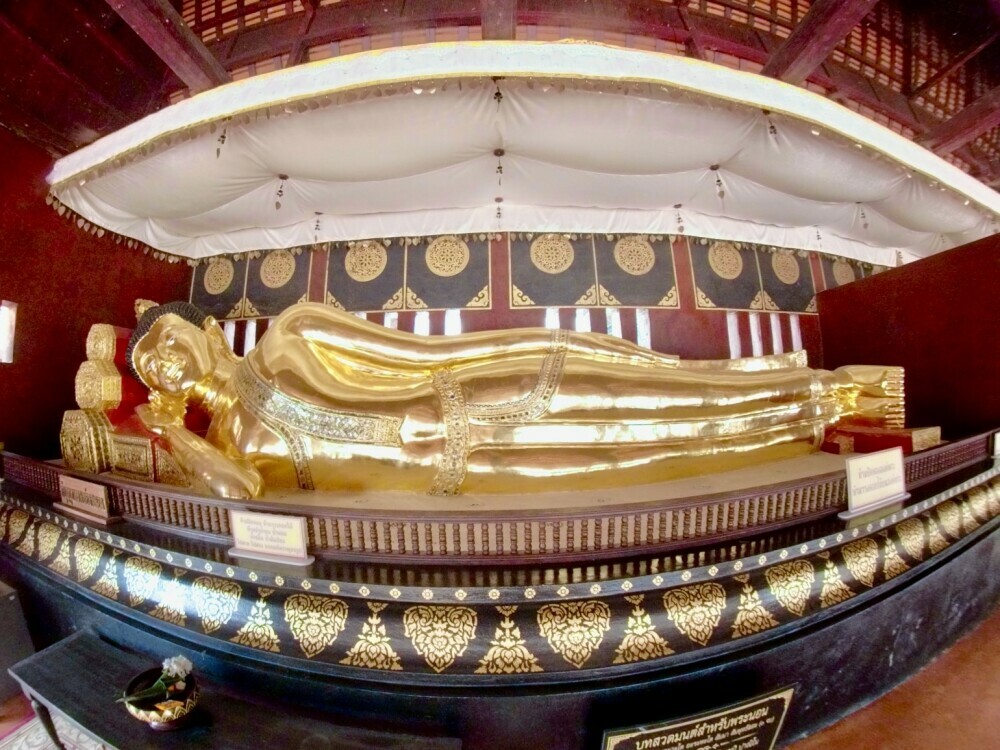 Reclining Buddha
Reclining Buddha
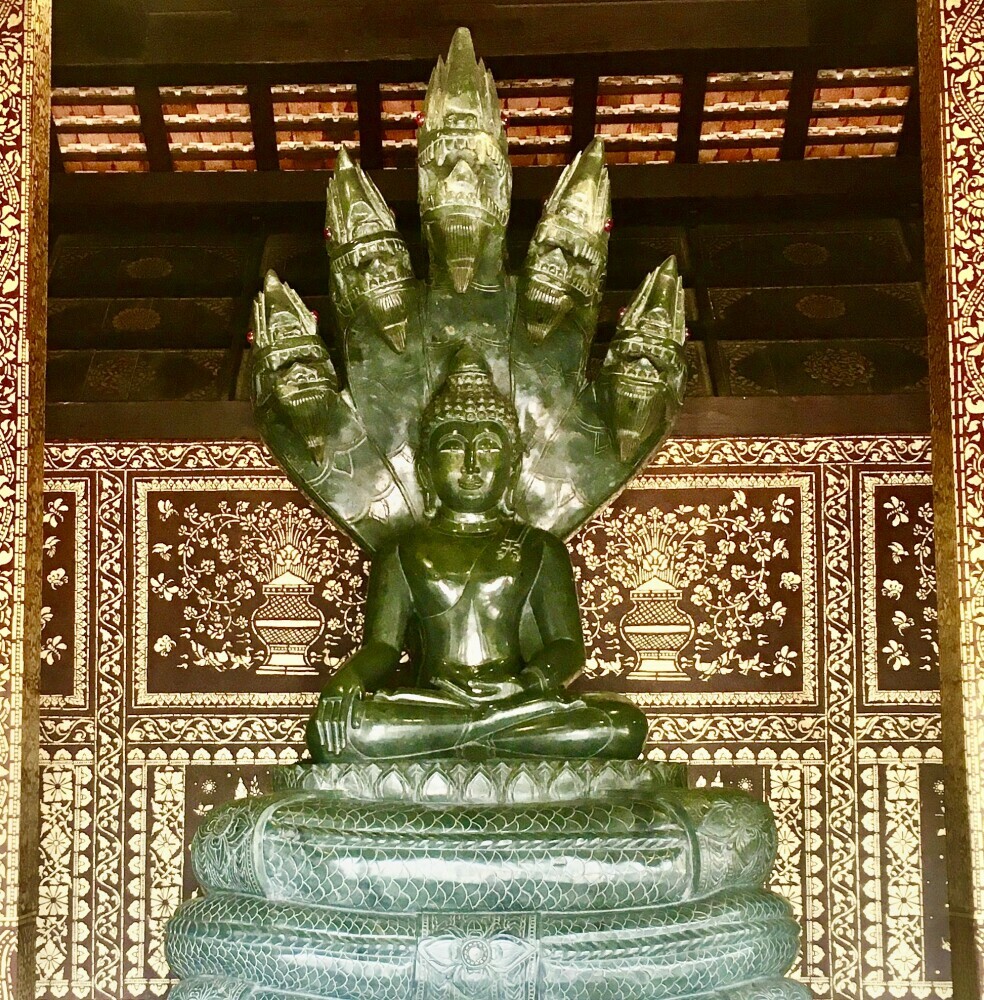 Protected by the Naga King.. Phra Naga Prok
Protected by the Naga King.. Phra Naga Prok
Wat Pa Sutthawat:
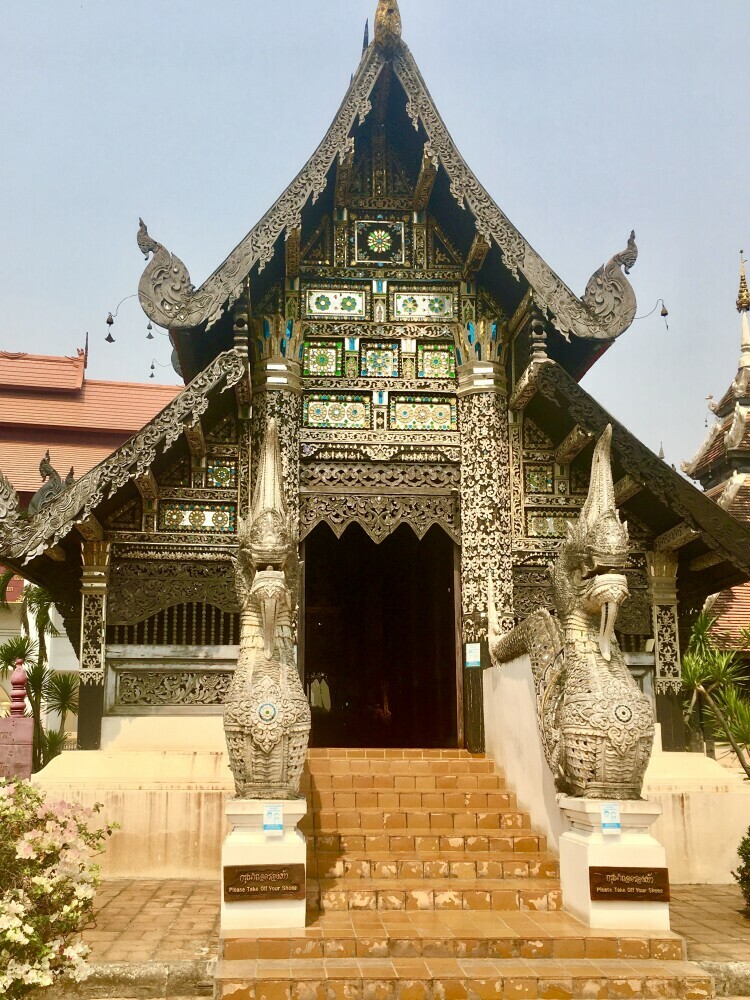 Ajahn Mun Bhuridatta Shrine
Ajahn Mun Bhuridatta Shrine
Born in 1870 and ordained as a monk in 1893, Ajahn Mun and his mentor Ajahn Sal Kantasilo are credited with establishing Thai Forest Tradition or ‘Kammatthana’, where meditation is of solitude in the forest. A monk after my own heart since I’d rather be outside in nature as well.
After being ordained he spent his life roaming the forest’s of Thailand and Laos, his dogma a life of solitude and austerity. Eventually he amassed a large number of students that were willing to live the hard life that he had chosen. His one meal a day for example, didn’t discourage his followers. After Mun’s death in 1949, the Thai Forest Tradition grew and spread across Thailand, and later the world.
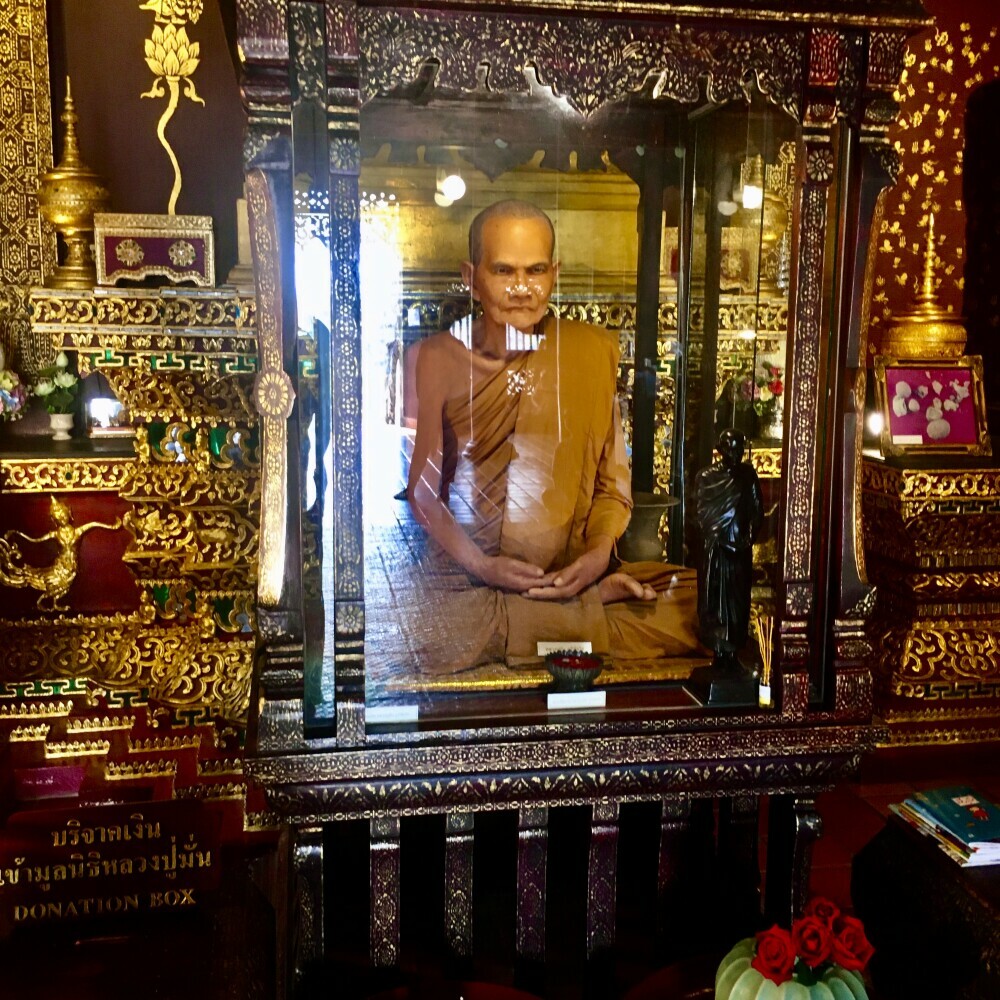 Ajahn Mun
Ajahn Mun
On this trip, we learned about some issues that cause tension between northern Thailand and Bangkok. One important example is the emerald Buddha we’ve seen in Wat Phra Kaew in the Grand Palace in Bangkok, (where the king lives) originates from a temple in Chiang Mai, from a time when it was part of Burma (modern-day Myanmar). The king in Bangkok came and took the emerald Buddha soon after northern Thailand was joined with middle and southern Thailand and brought it to the seat of government In 1552.
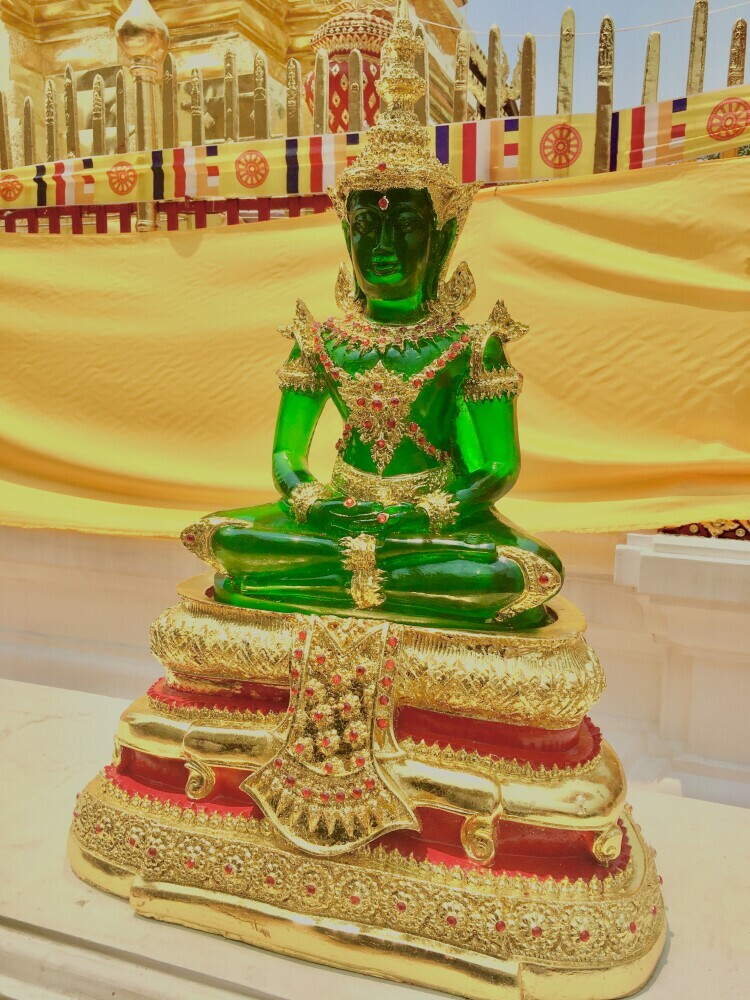 Emerald Buddha replica
Emerald Buddha replica
Now both Myanmar and Chiang Mai want it back. This Buddha is thought to be the most sacred in Thailand. In Bangkok, they change the cloth the Buddha is draped in and the ornaments attached during the summer, the rainy season, and the winter. Now that we have traveled more in Thailand we see that the practice of draping the Buddha in gold cloth happens at many shrines. In Ayutthaya, we saw a monk leading a procession of faithful around the shrine holding up a gold cloth. Then they went up to an inner room to chant over the gold material draped around the outside of the shrine in the end. Most of the Buddhas surrounding the Wat were draped in fresh gold fabric that day. We visited during Chinese New Year, so we may have stumbled on a special day in the Buddhist calendar.
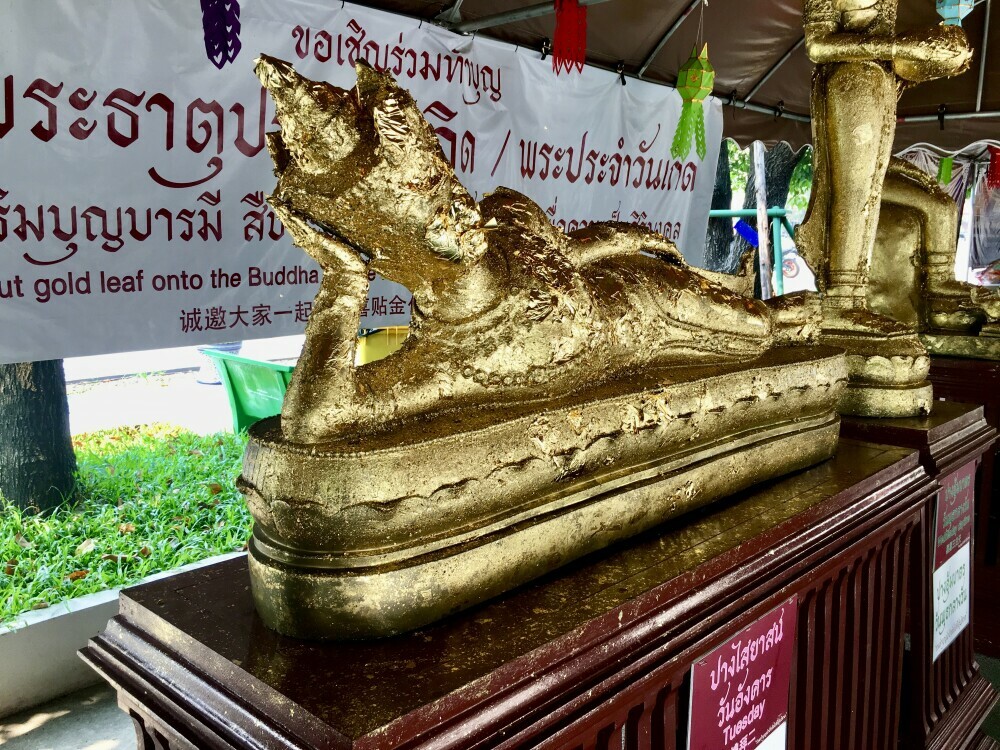 Gold Leaf Buddha
Gold Leaf Buddha
Wat Phrathat Doi Suthep
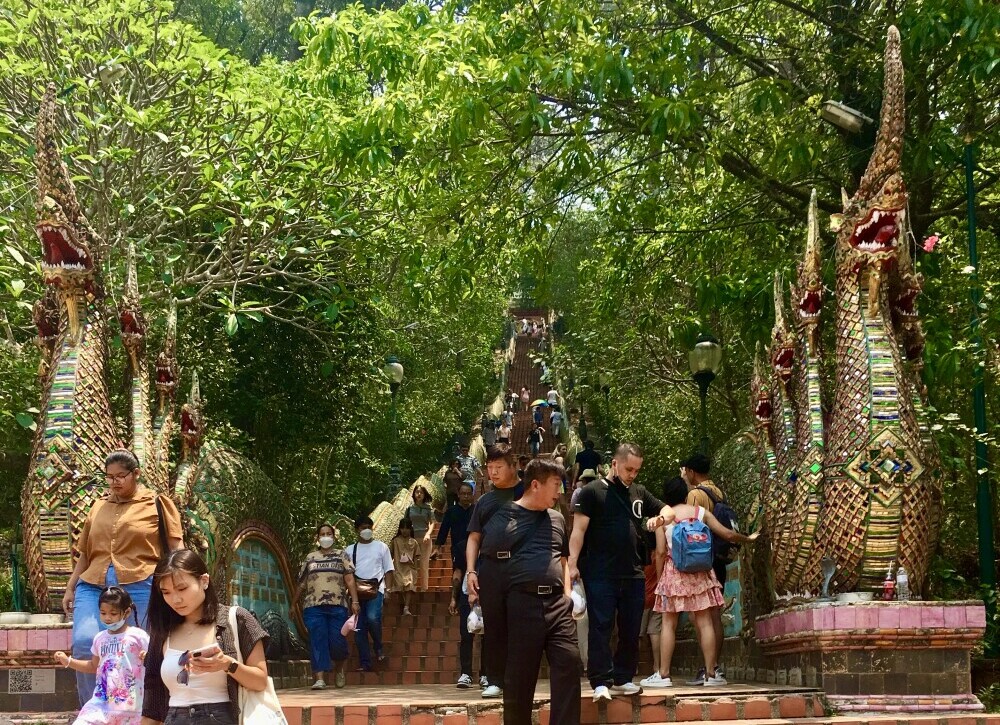 The Naga or Serpent Staircase
The Naga or Serpent Staircase
 Going to the bottom, the very very bottom.
Going to the bottom, the very very bottom.
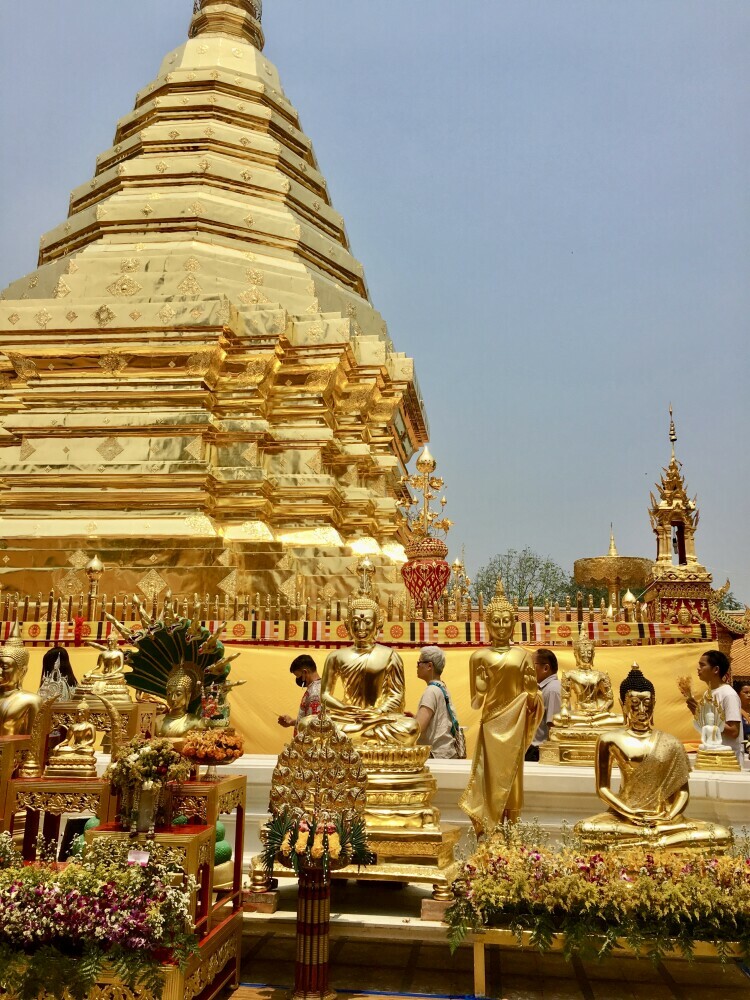 Lots of gold leaf.
Lots of gold leaf.
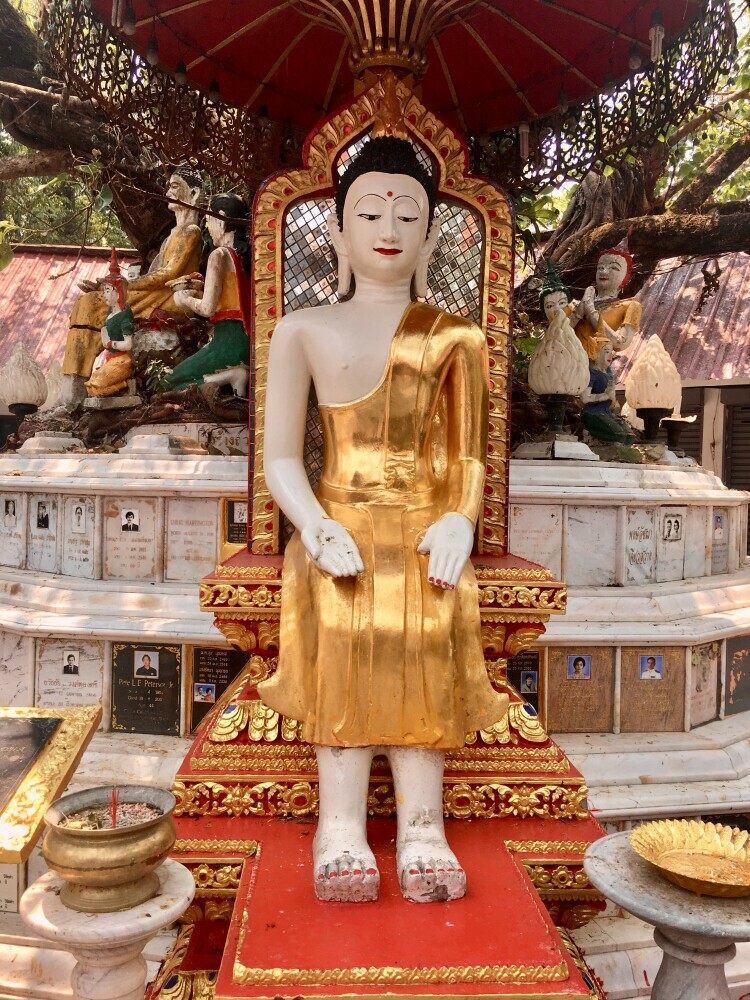
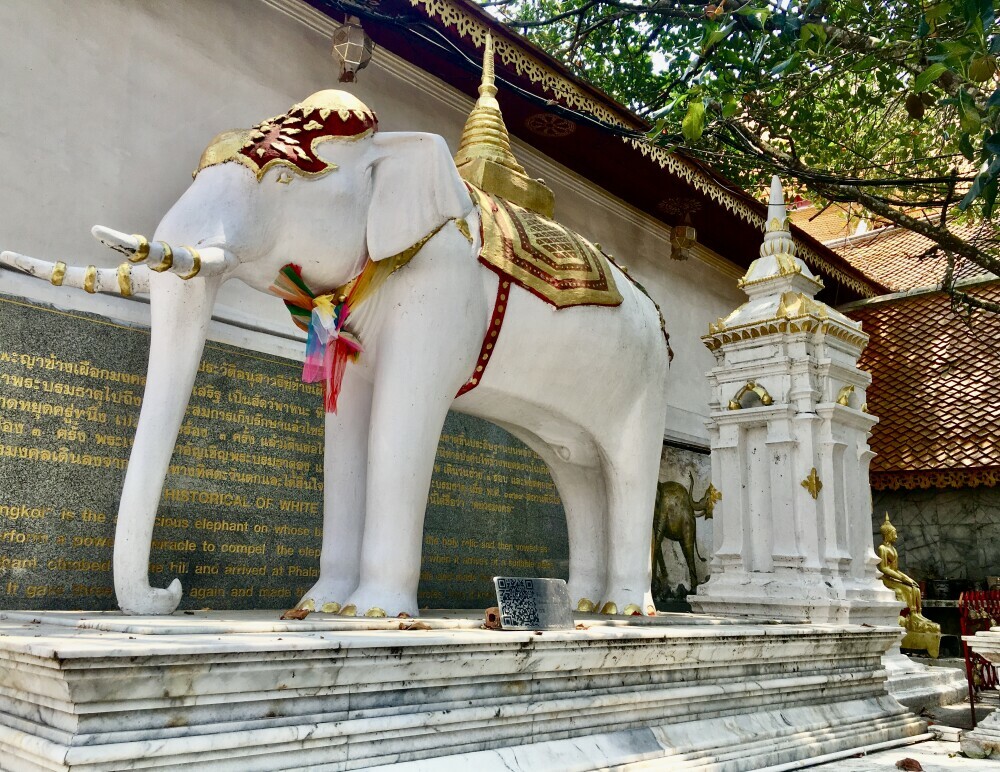 White Elephant Shrine
White Elephant Shrine
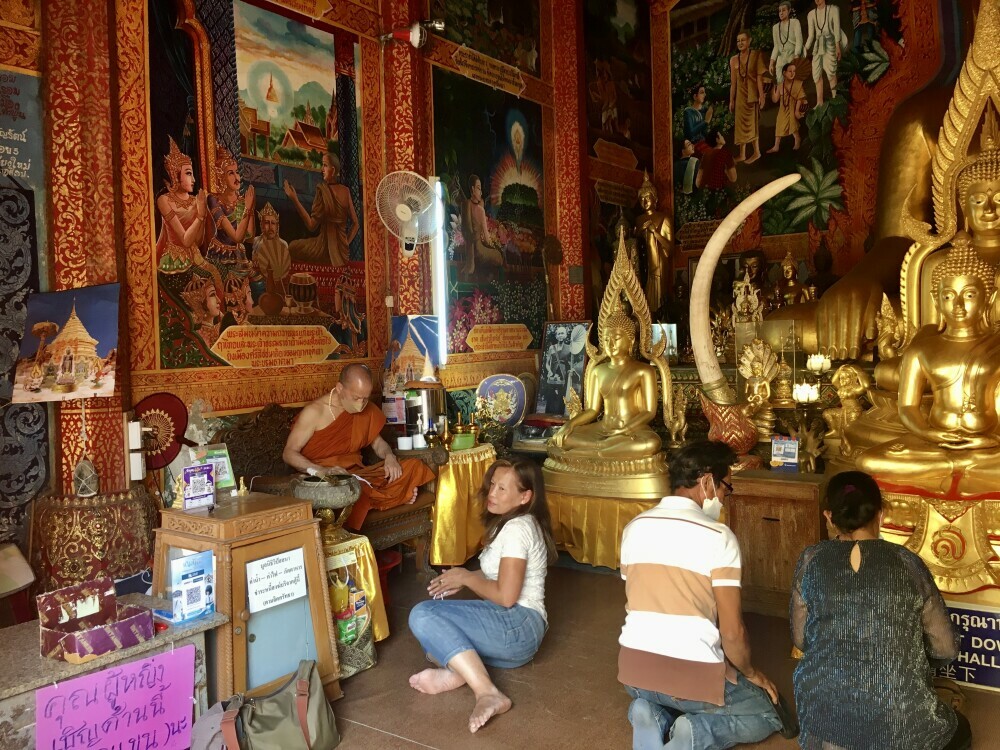 Monk blessings.
Monk blessings.
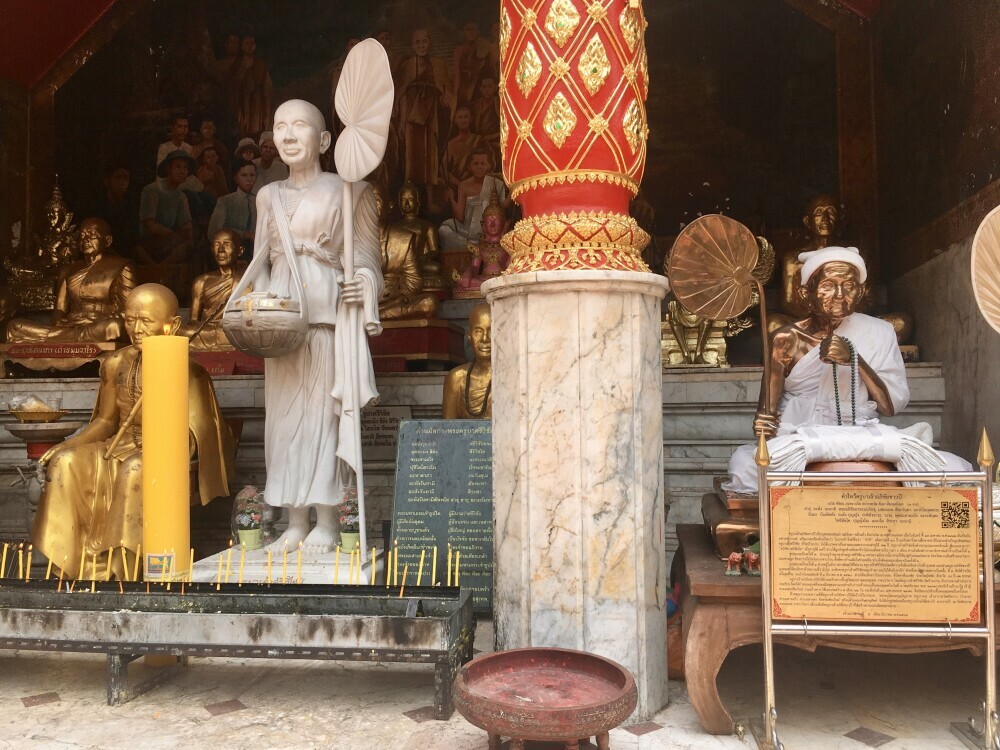 Revered Monks.
Revered Monks.
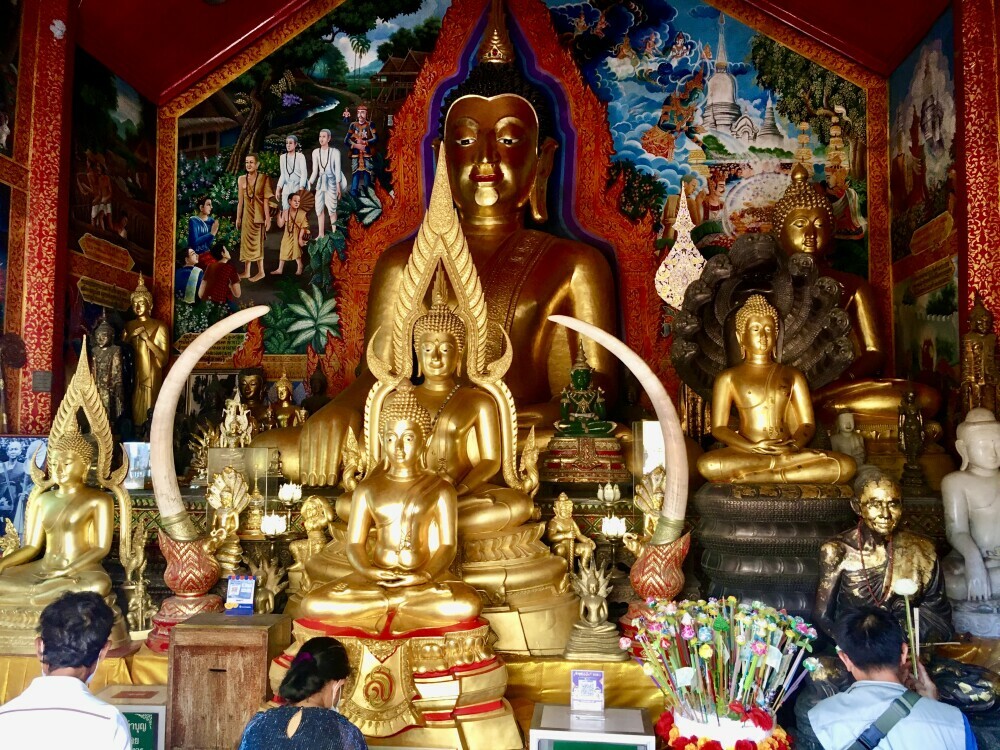
Mount Inthanon:
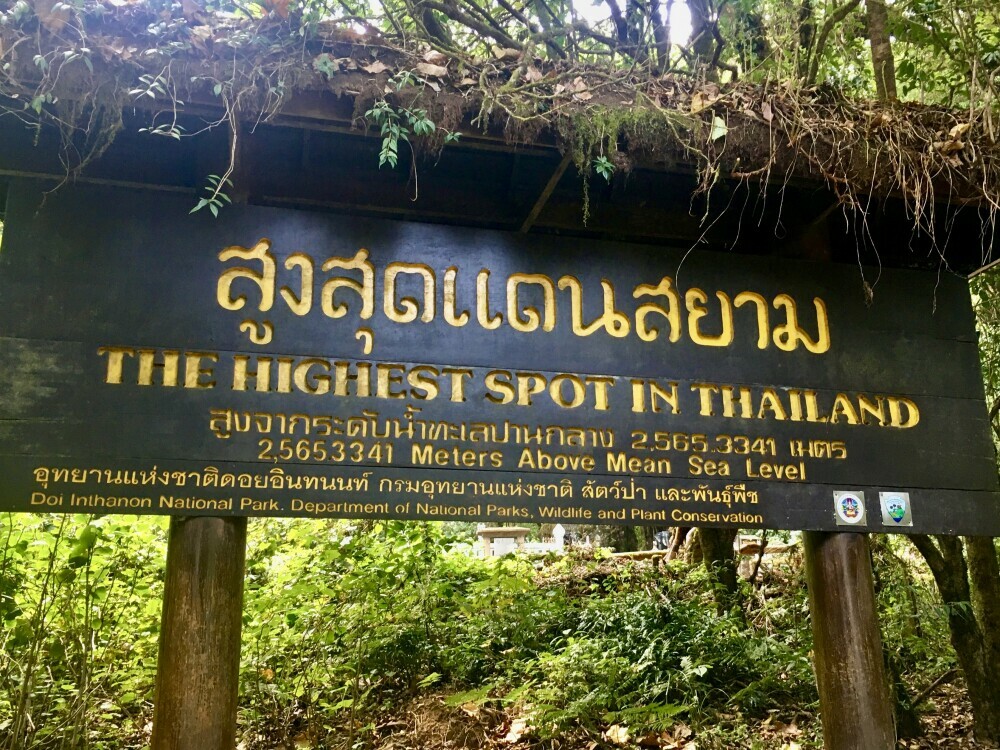
Tuesday took us out of town to Doi Inthanon National Park. The highest point in Thailand, at 2565 meters above sea level. There is a shrine to white elephants here. The daughter of a king had elephants take her father’s ashes up the mountain and they chose the spot for the shrine when they stopped and trumpeted in this place. Both the father’s and the elephant’s ashes are enshrined with well-maintained markers and fresh flowers.
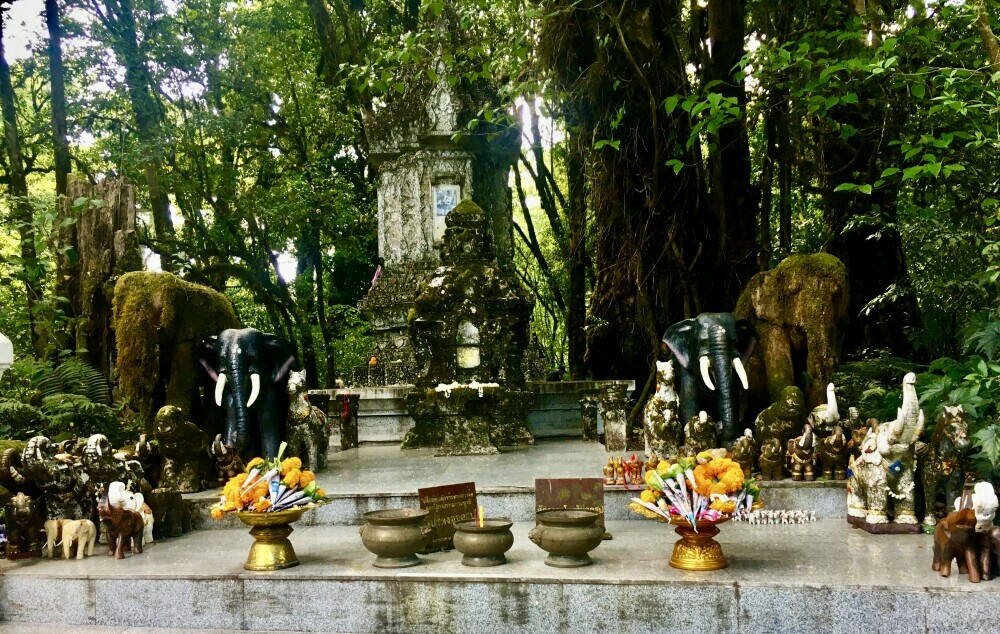 King Inthawichayanon Memorial Shrine
King Inthawichayanon Memorial Shrine
Nearby is the national park, and the other feature of the area are the plants. Many species are specific to this place. As a North Carolinian, I was particularly impressed by the rhododendron trees. Huge and beautiful.
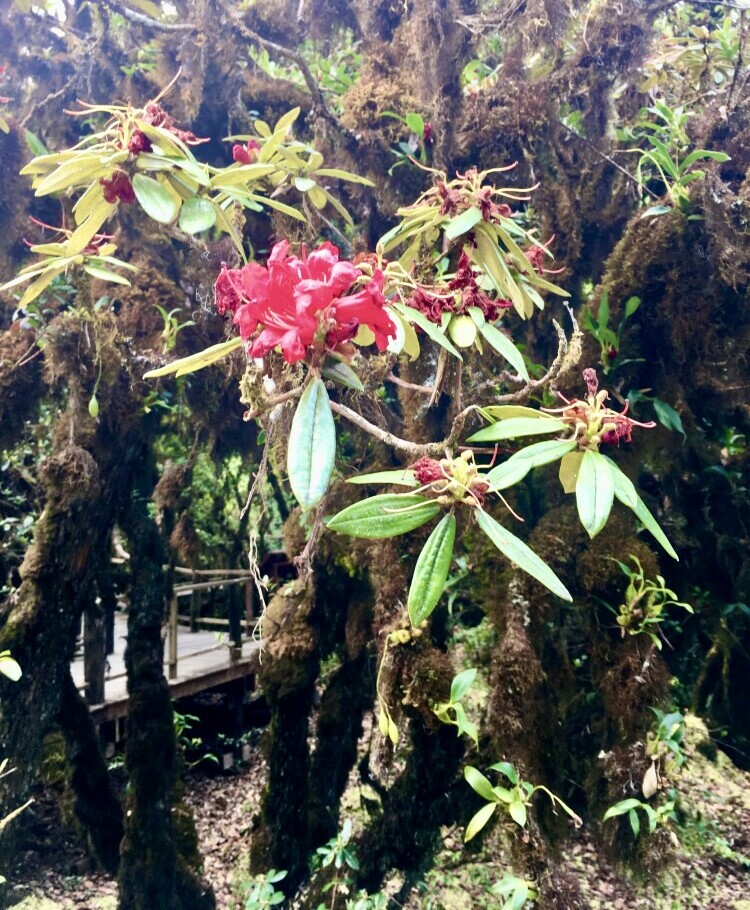
The park had a cool canopy walk through the forest. They keep you exactly where they want you, but it doesn’t feel too intrusive to the environment. There are so many varieties of beautiful birds and plants in Thailand. Everywhere we hear interesting calls, see interesting animals, and enjoy the brilliant colors…a naturalist’s wonderland. Chiang Mai was no exception.
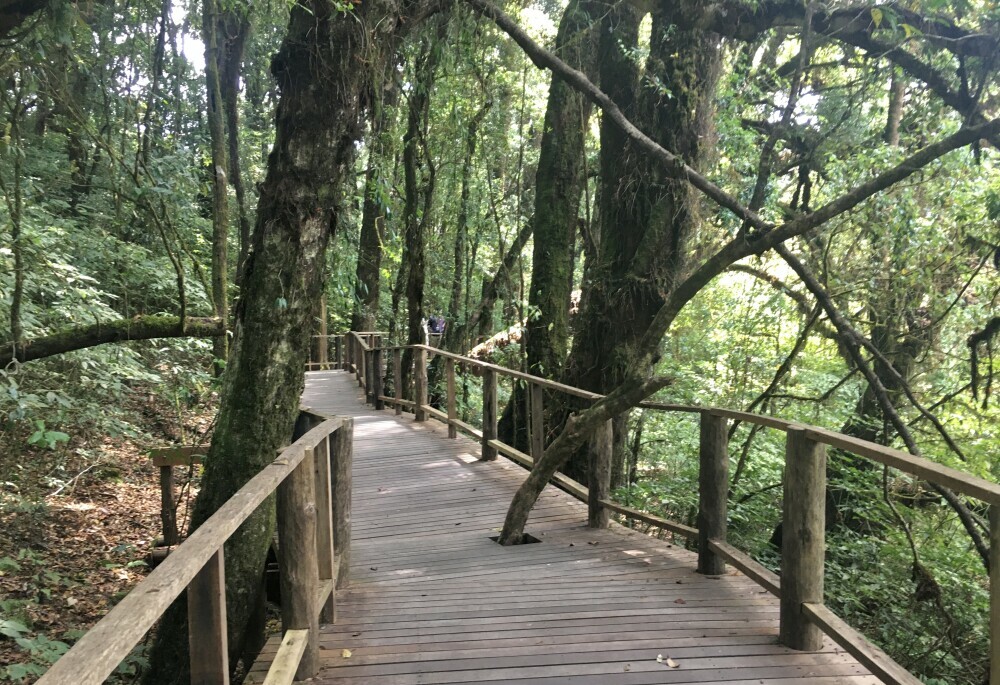
Twin Pagodas of Doi Inthanon:
As we came down the mountain we stopped at the twin pagodas. These Chedi’s were built to honor the 60th birthday of King Bhumibol Adulyadej and was built in 1987. The second lavender hued Chedi is to honor Queen SiriKit’s 60th birthday and was built in 1992. Being 60 myself, i’m a little put out that construction on my Chedi hasn’t Even started. Oh well! The grounds are also pretty amazing, and with this locale being the highest in elevation, it can be far cooler than other parts of Thailand.
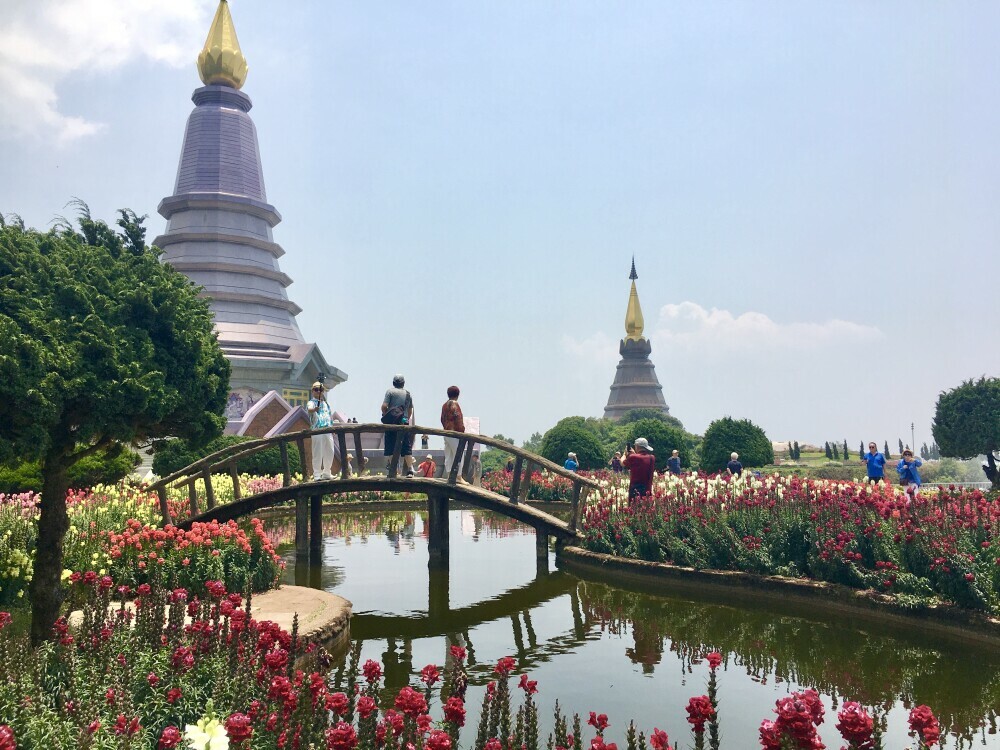
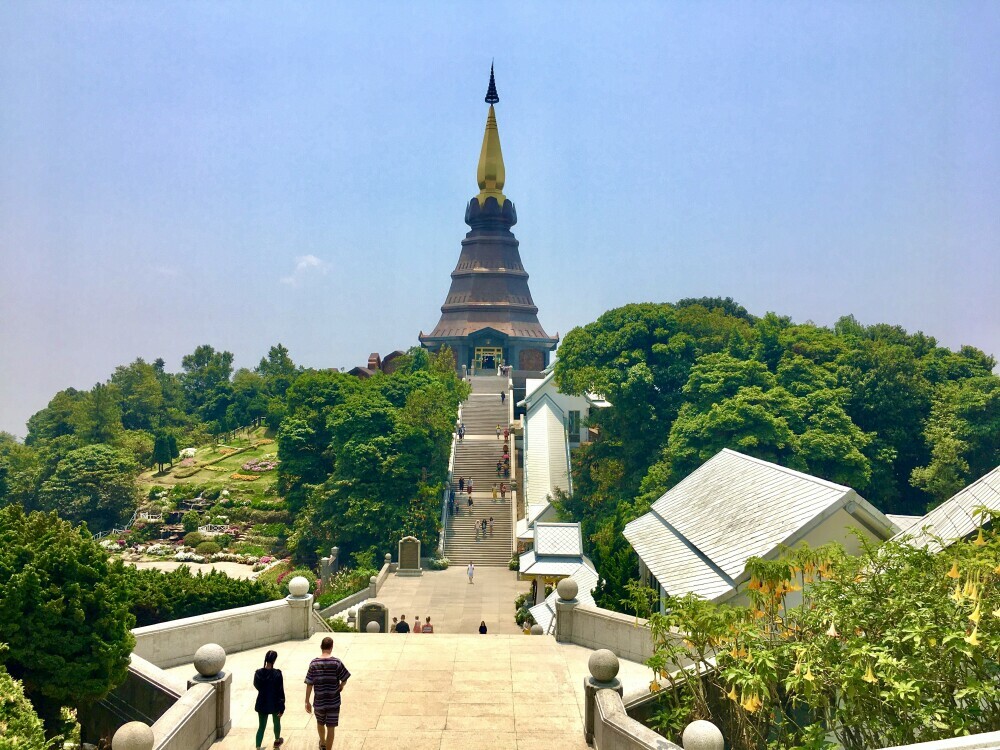
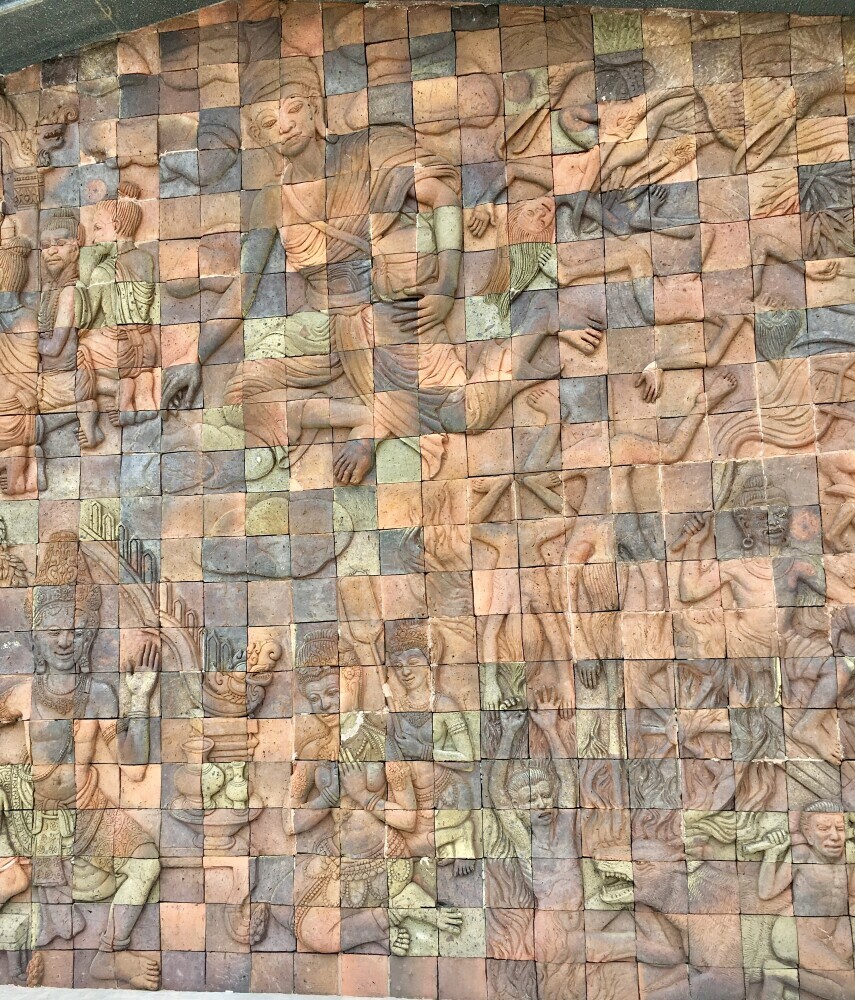
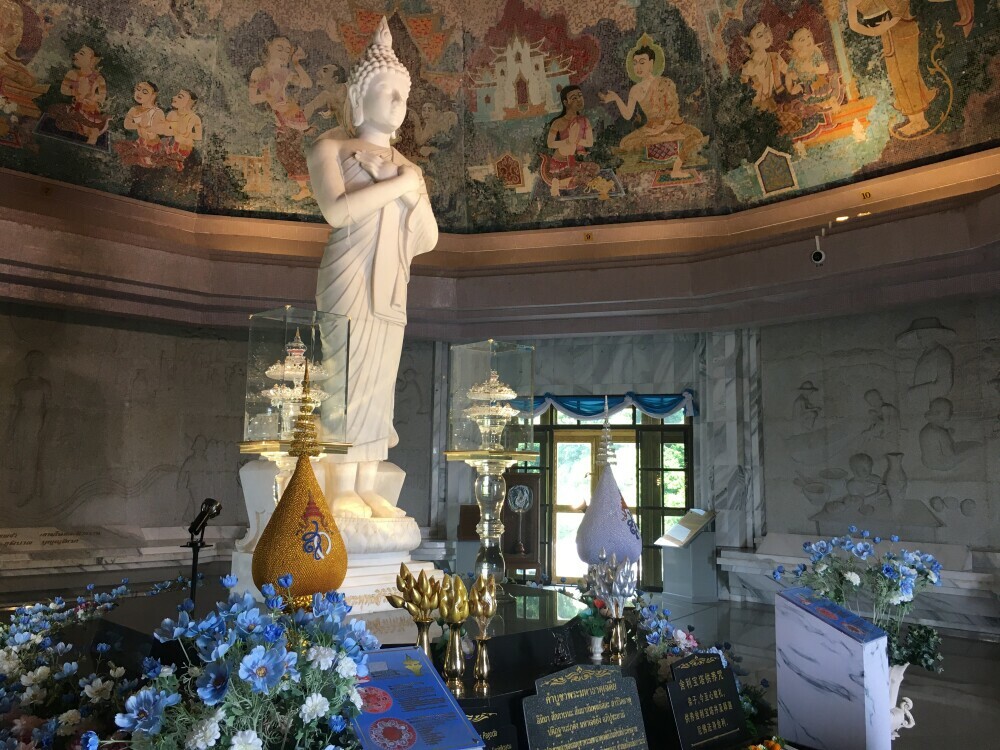
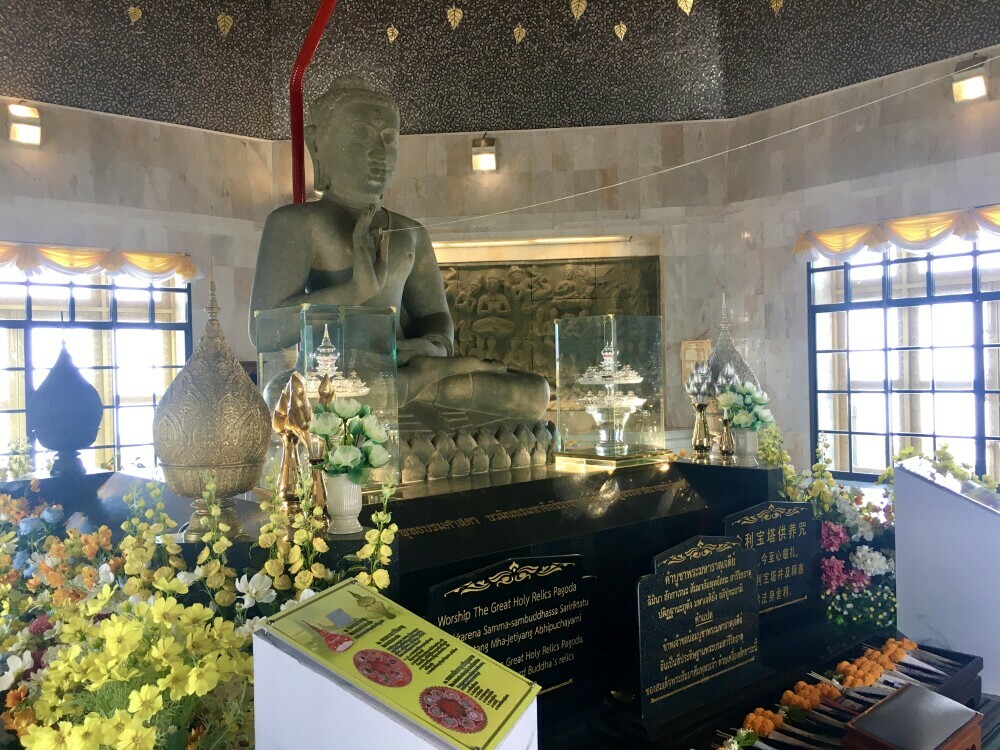
Except for Songkron. our trip to Chiang Mai unfortunately happened at the wrong time of year for us to enjoy the views and the beauty of the surrounding area. We were there in mid-April, the dry season that is also the burning season. Our guide assured us that Thailand’s contribution was “due only to wildfires. However, smoke from farmers in the neighboring countries burning their fields drifted over borders.” I suspect there is some field burning in Thailand as well. The issue of pollution is in the news here. It is something they are talking about trying to address.
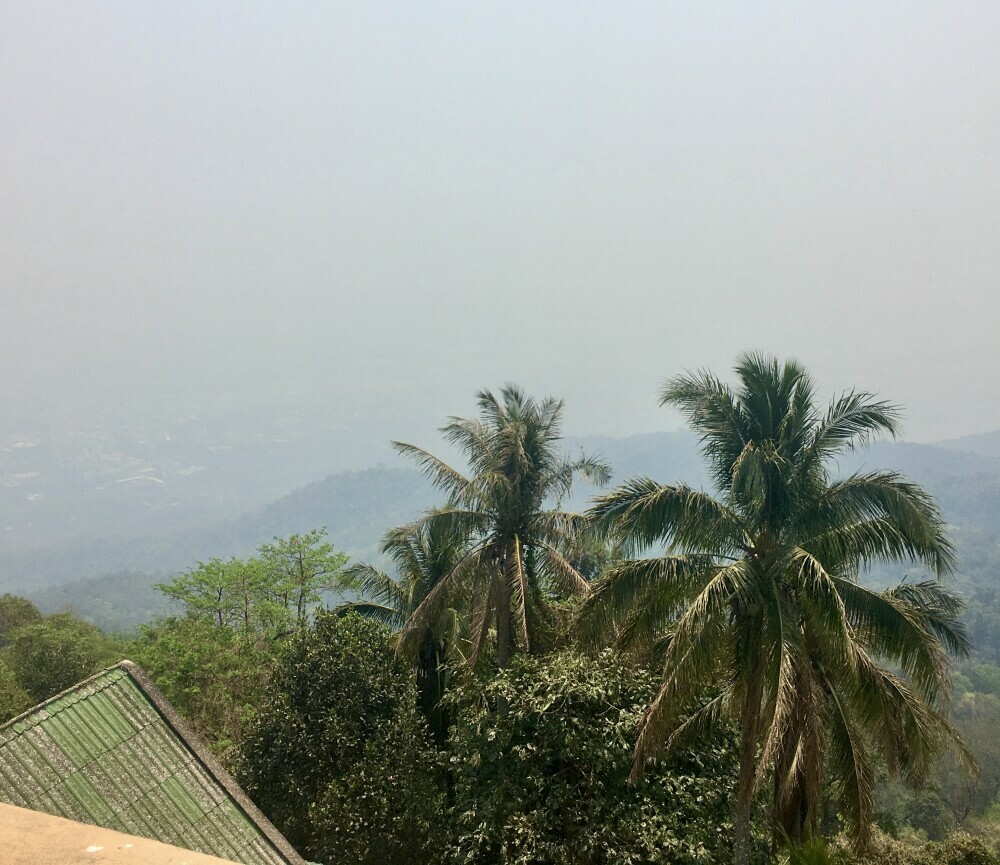 Smokey vista
Smokey vista
Further down the mountain, we went to a village of people from the Karen tribe. They are refugees from troubles in Burma who are permitted to live in the national park, where they grow coffee, and the women weave beautiful textiles. We shopped a bit, then took a tour of the village. I am struck by how generous these people are to let us come as tourists of their everyday lives, walking through their streets and looking at their homes.
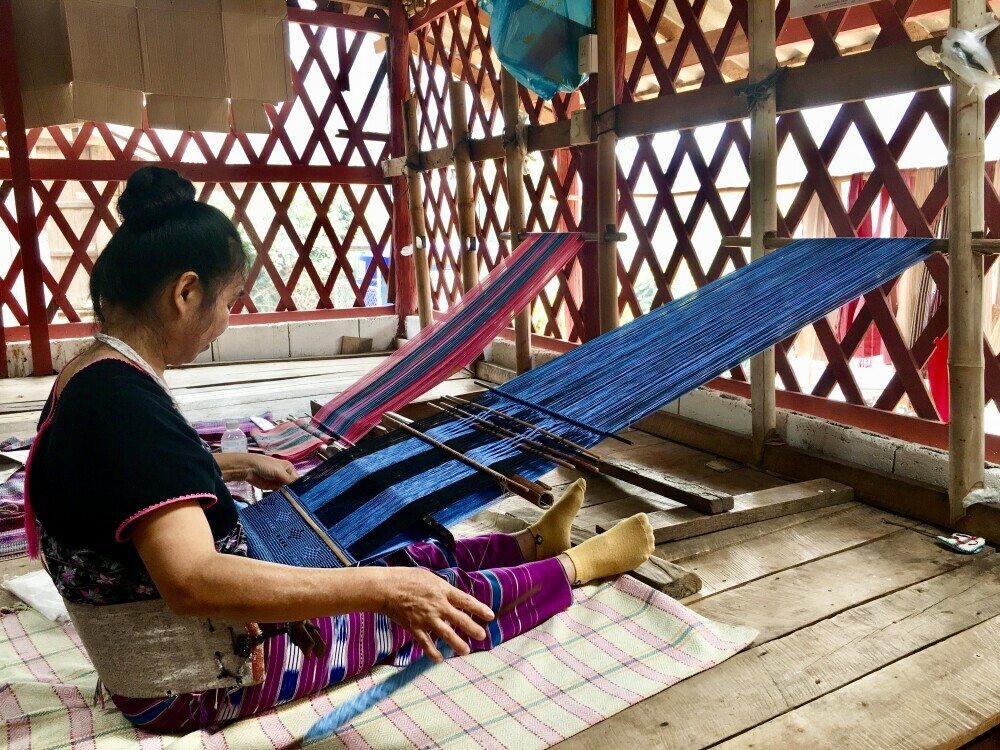 Notice the lumbar tensioner.
Notice the lumbar tensioner.
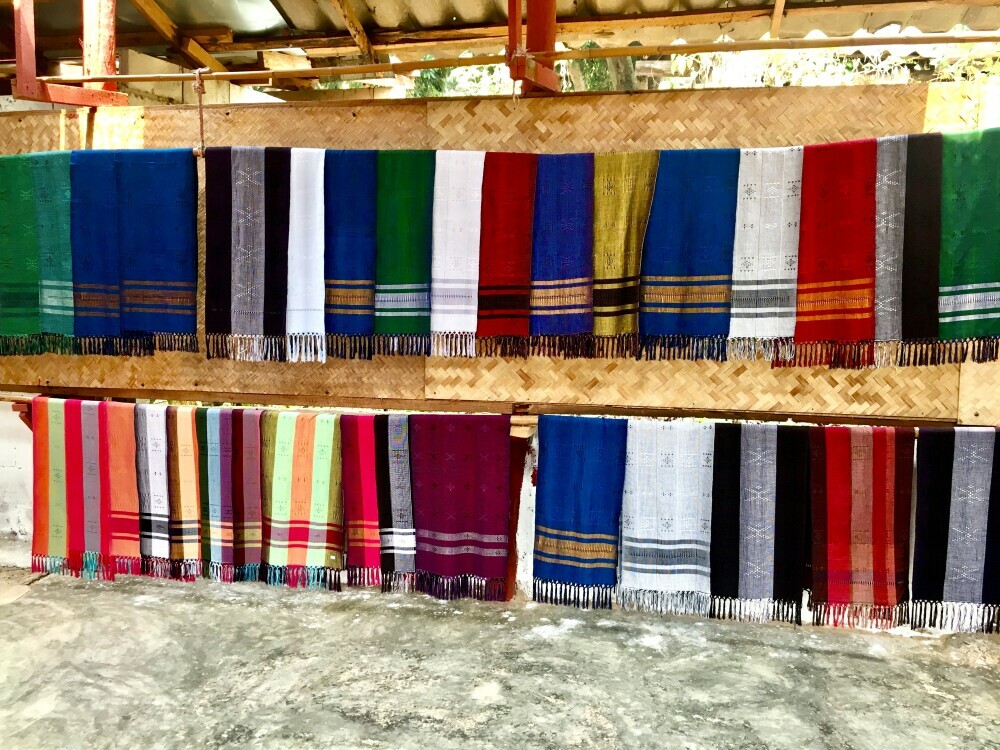 Nice Variety
Nice Variety
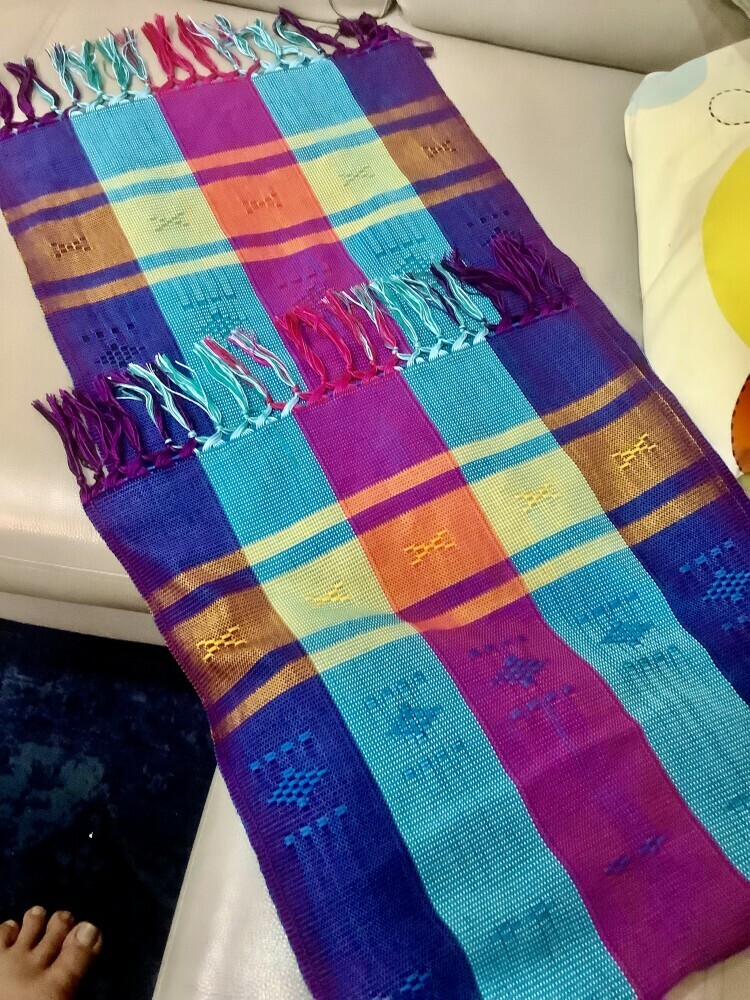 Table Runner
Table Runner
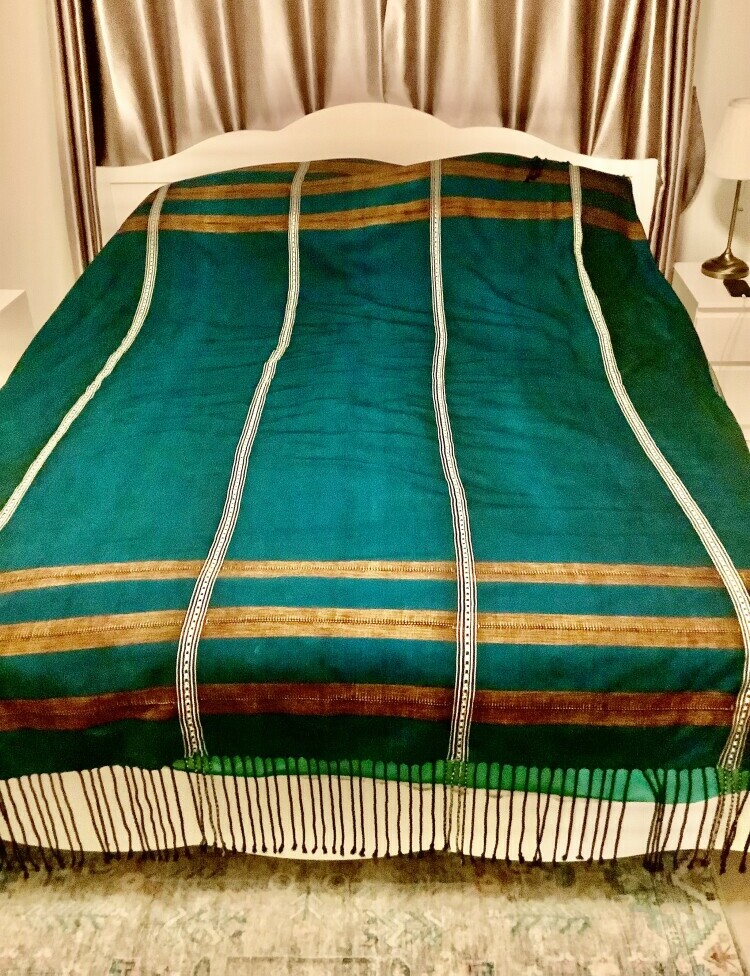 New Bedspread
New Bedspread
On the other hand, we buy things and bring some money into their lives. They greeted us warmly and chatted with our guide. Those that spoke a little English tried it out on us. We gave them the few phrases we know to get around and be polite.
Wachirathan Waterfall:
Our next stop was a sweet little waterfall. They had all sorts of levels and angles for us to peek at it from several perspectives.
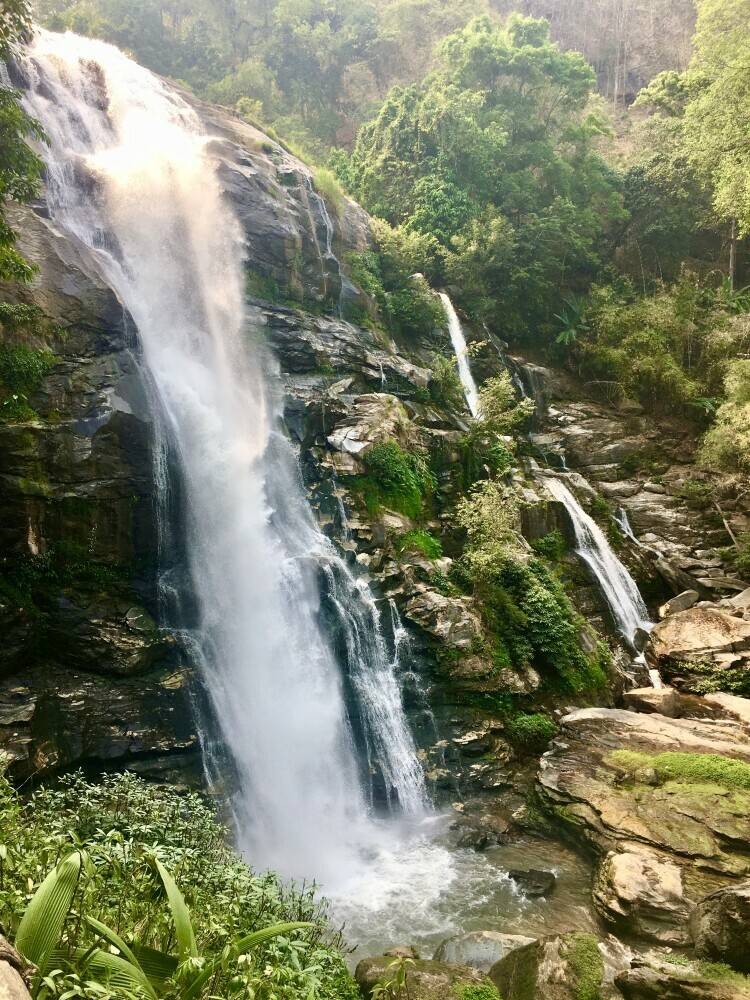 Wachirathan Waterfall
Wachirathan Waterfall
We totally enjoyed being on this tour with just the two of us. We asked the questions we wanted and spent as much or as little time as we wanted in every place we went. When we finished, at each stop, our driver had the van cool and waiting for us. In Thailand, it is important to them that a Thai person shows foreigners around. They know and love their culture. They want to be sure it is represented correctly and fairly by people who understand it.
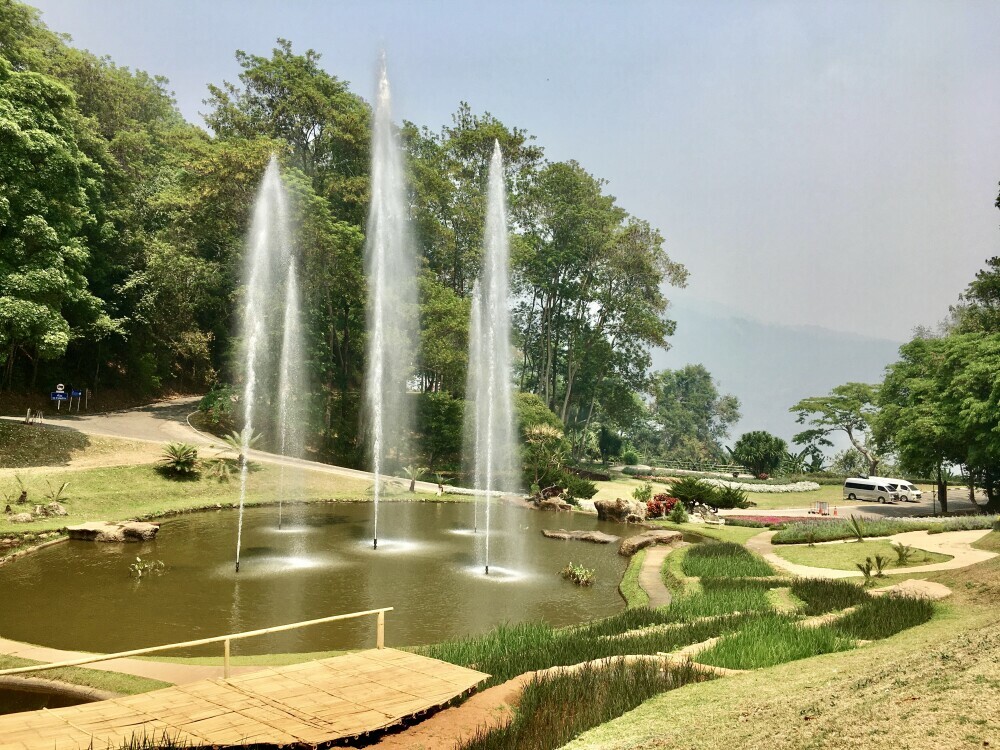 Our chariot awaits.
Our chariot awaits.
We went to a village famous for making parasols and umbrellas on our own on Wednesday, the day before the official Songkran. Our tuk-tuk driver slowed down in front of all the places where he saw people with buckets so they could dump water on us and spray us with hoses. We were prepared with covers for our phones and plastic bags for wallets and passports, etc… And good thing, because we were completely drenched by the time we got to the places we wanted to see. We dried off a bit while we looked around, but then, we were soaked again on the way back to the hotel, and he even went in a back way. 🙂
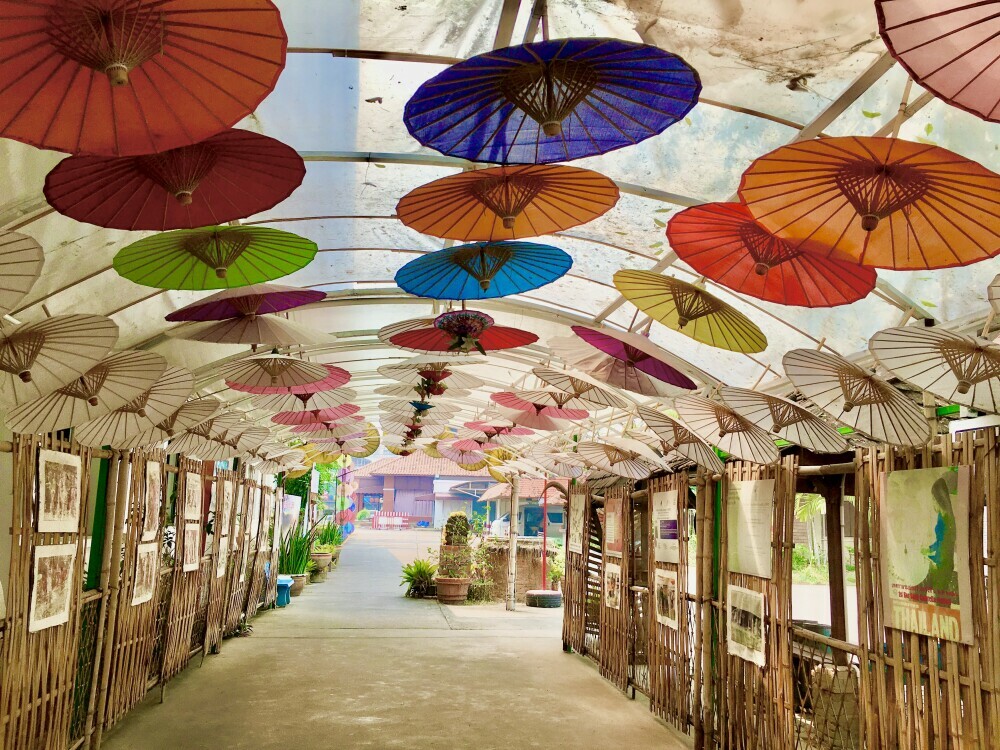 Can’t blame it on the rain.
Can’t blame it on the rain.
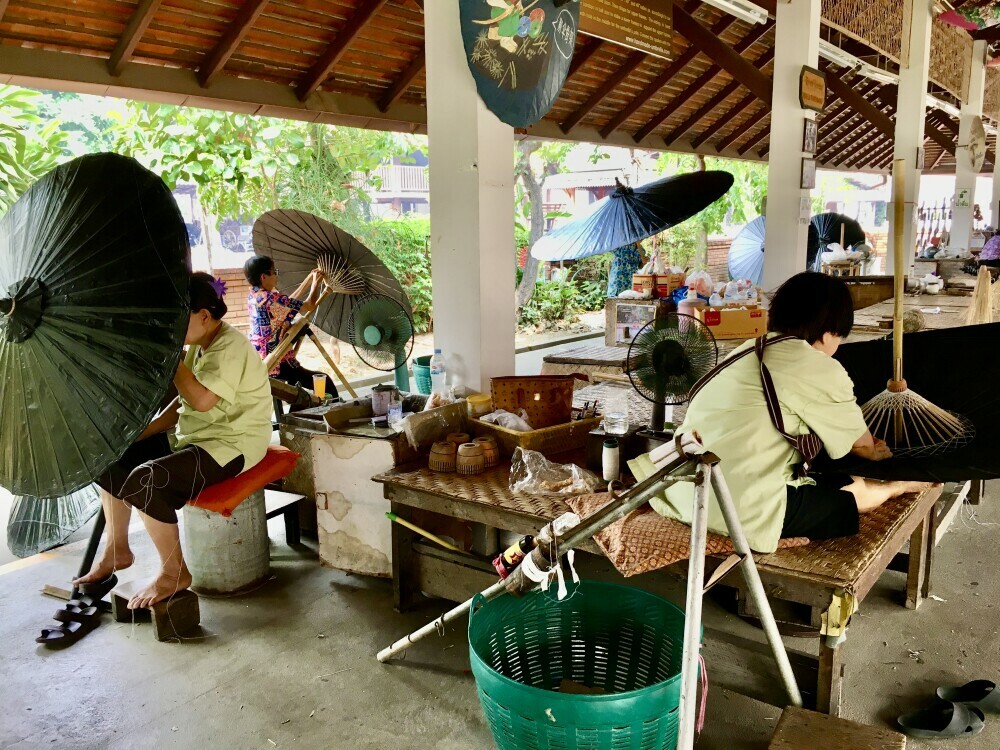 Artists at work.
Artists at work.
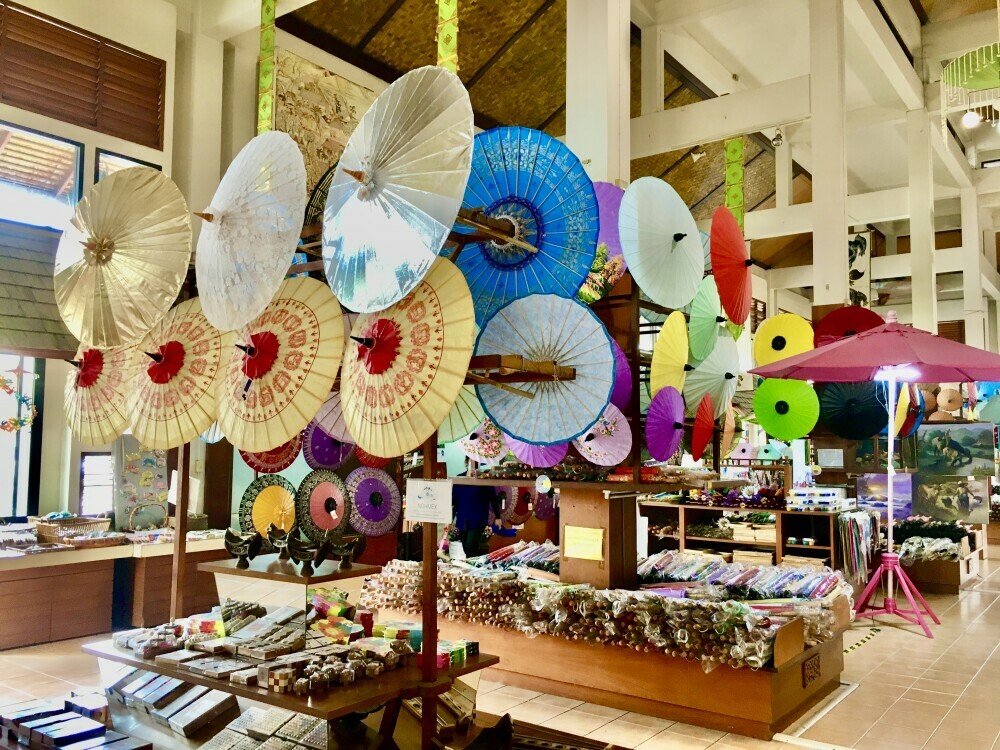 Exit through the Gift Shop.
Exit through the Gift Shop.
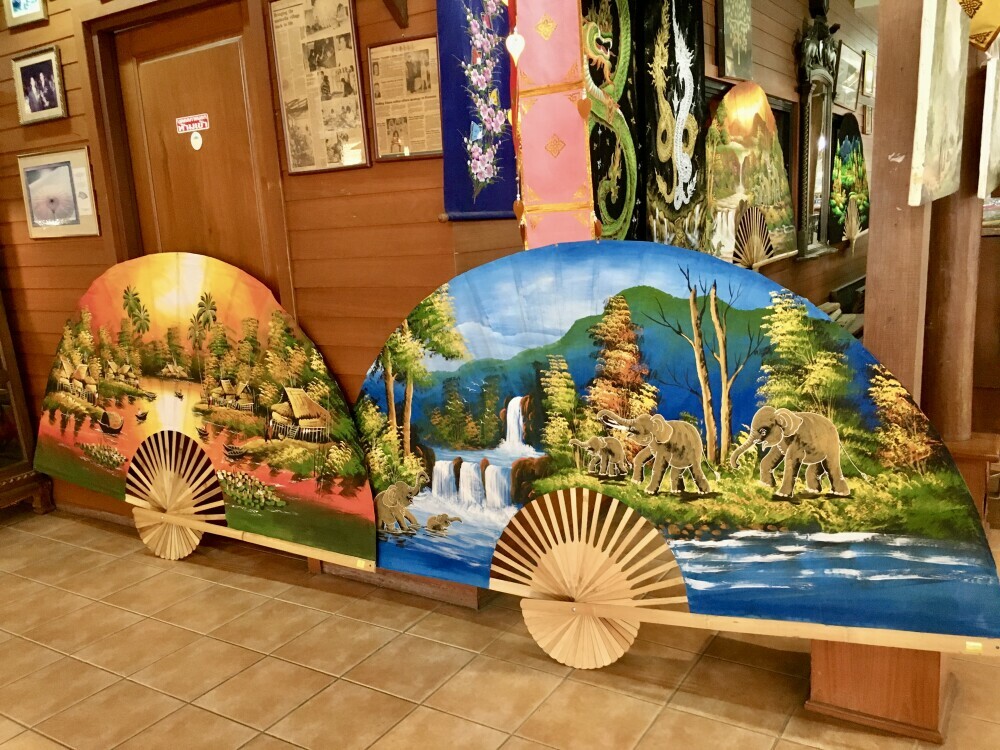 Fan Me
Fan Me
We also stopped into a silk factory to watch the once secret and exclusive process of silk production. We have been to the Jim Thompson House museum in Bangkok, he was an American businessman and champion of Thai silk in the 50’s and 60’s. Serving in the OSS during WW2, rumors of his continued involvement with the CIA during the Vietnam conflict flew and grew with his mysterious disappearance in Malaysia in 1967.
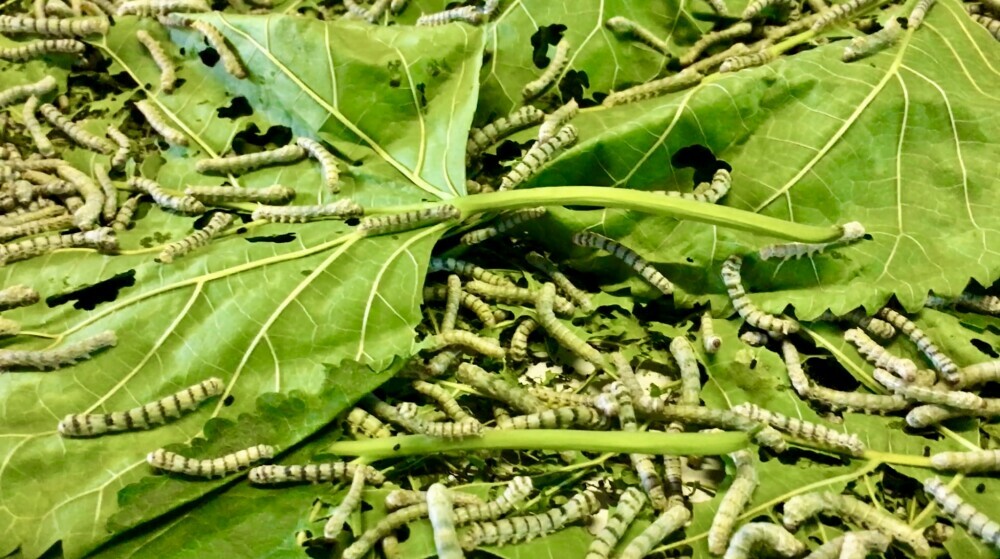 Silk worms feasting.
Silk worms feasting.
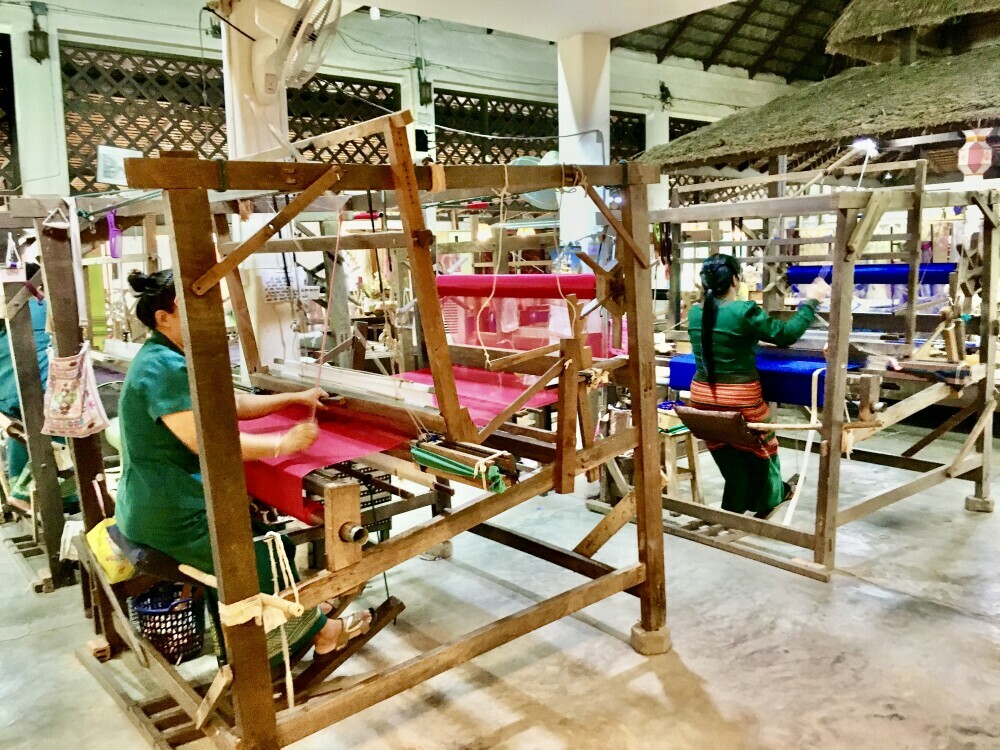 Looms in action.
Looms in action.
On the street in front of our hotel people had water fights going with high-powered, aim-able squirt guns. We watched one guy on our hotel porch Wednesday night, ambushing people, then ducking so they didn’t know who it was. When they figured him out, we sometimes got caught in the crossfire. We sat on the porch watching all the revelers until after dark that night. Another interesting bit was an antique truck show in front of our hotel. Some nice examples that took me back a few years, to my childhood. Things quieted down around midnight.
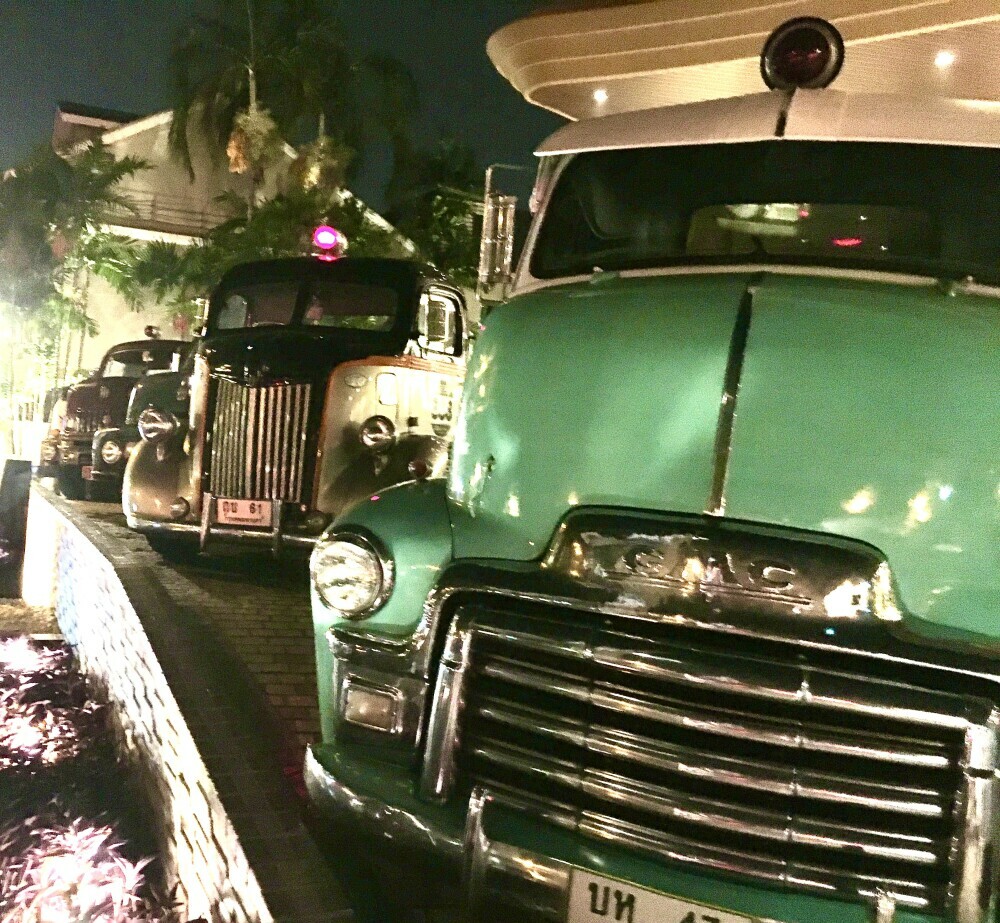
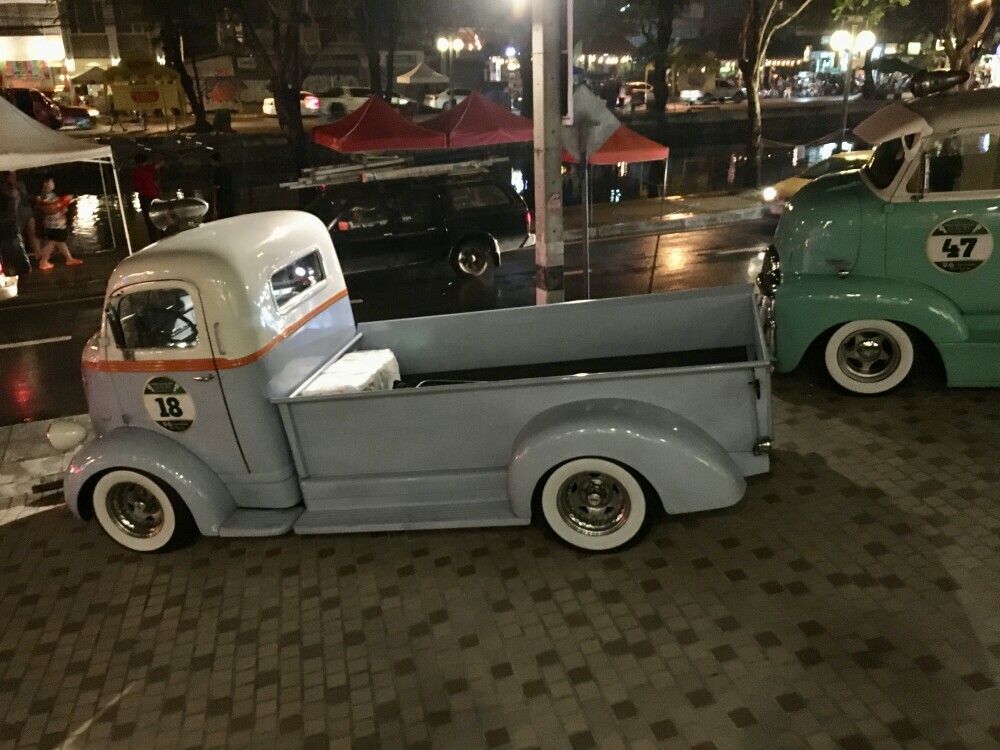
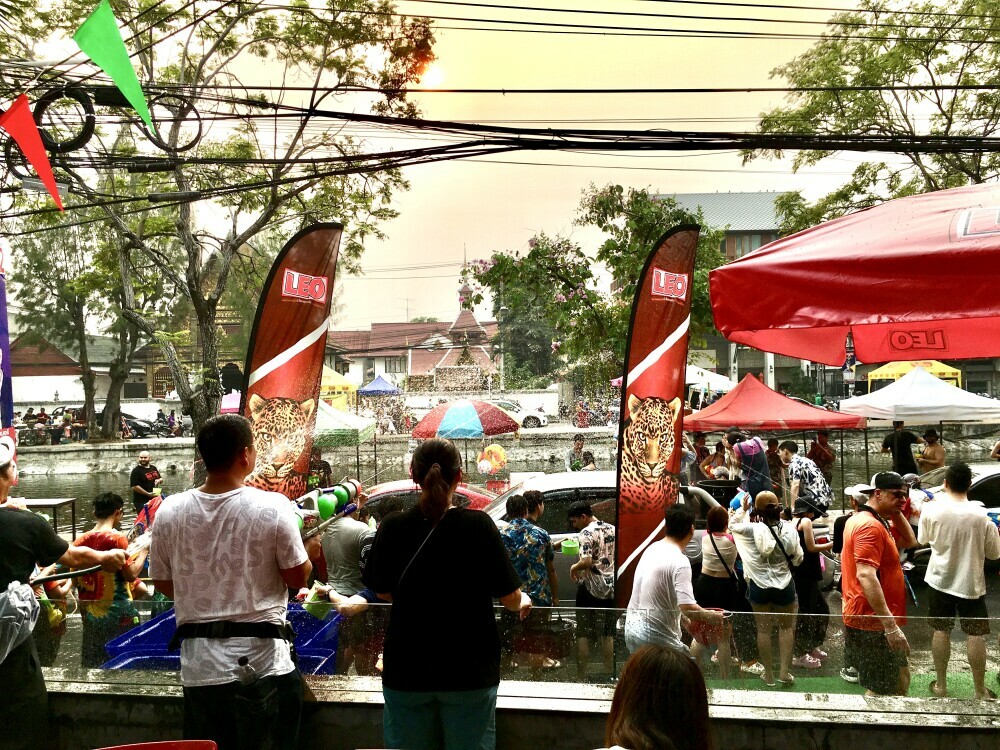
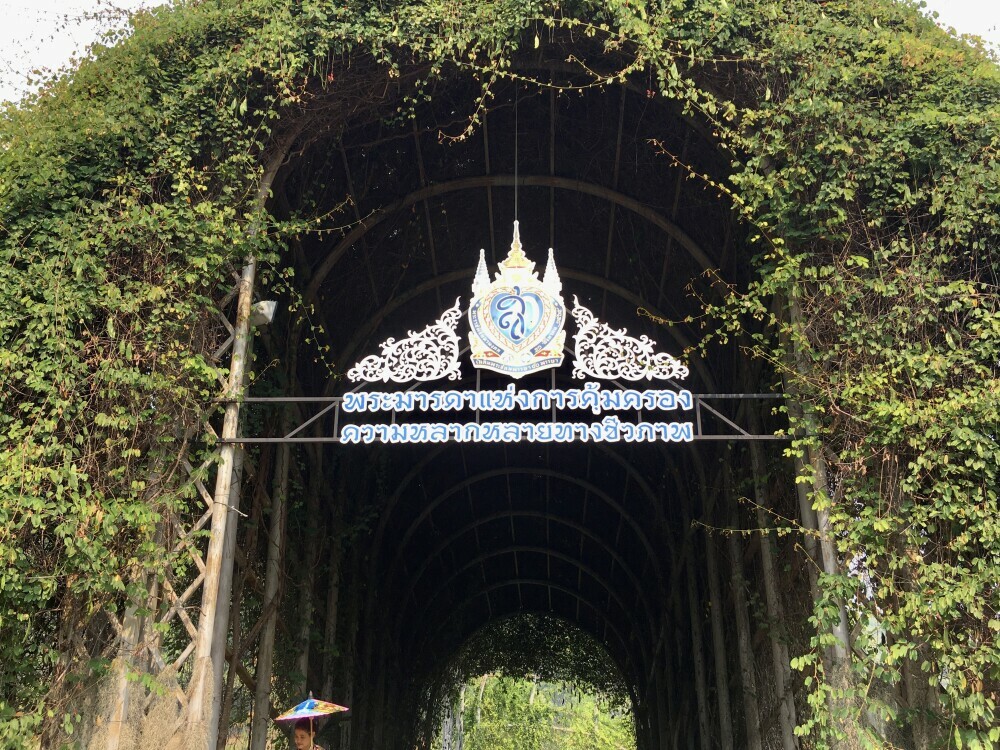
Thursday we went to Queen Sirikit Botanical Gardens in the morning. There was another skywalk through the canopy with super interesting plants.
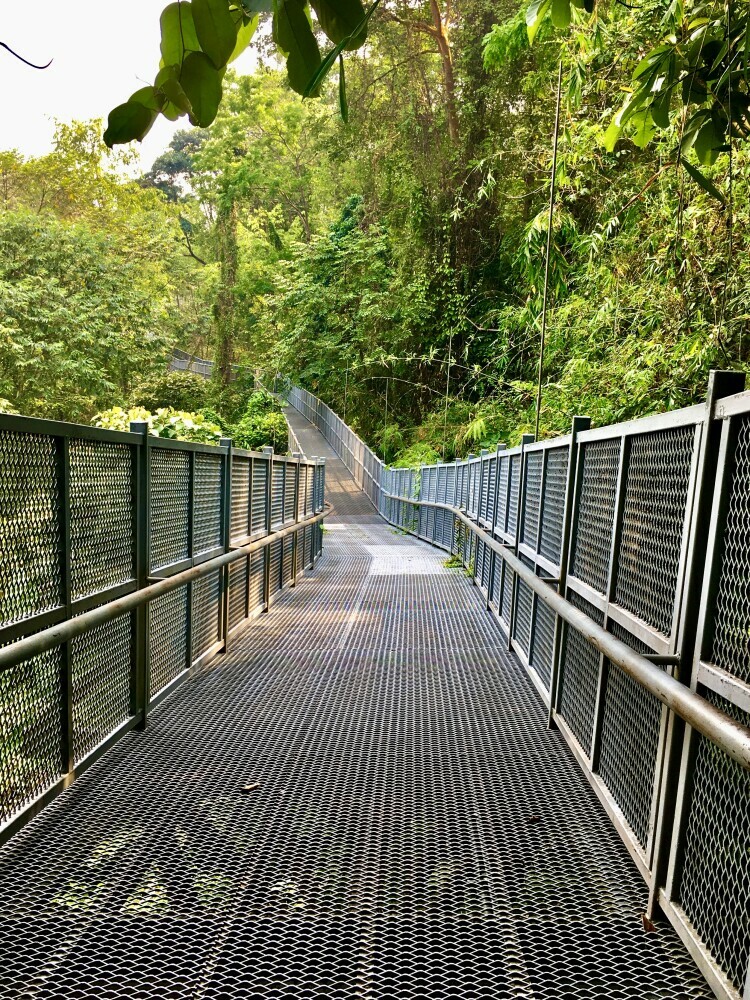
Then we went through a series of greenhouses filled with carnivorous plants and plants with interesting foliage, orchids, water lilies, lotus…etc… Fascinating, and good fun to see, but they were not necessarily plants native to Thailand. It’s just a place for people to see plants from all different habitats.
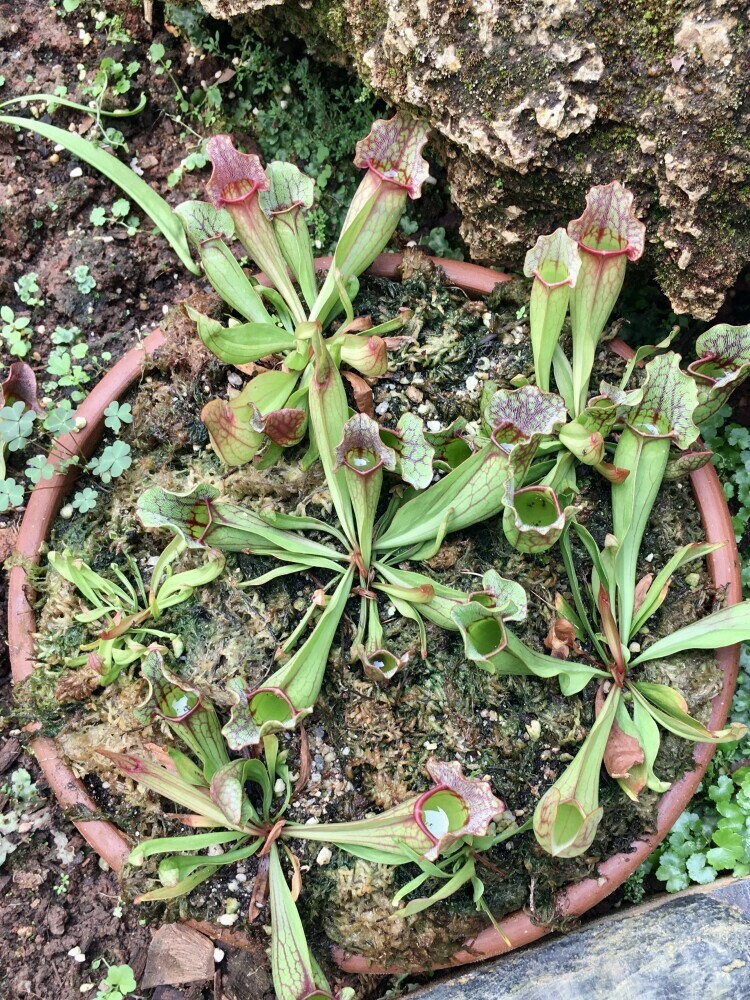 Pitcher Plants
Pitcher Plants
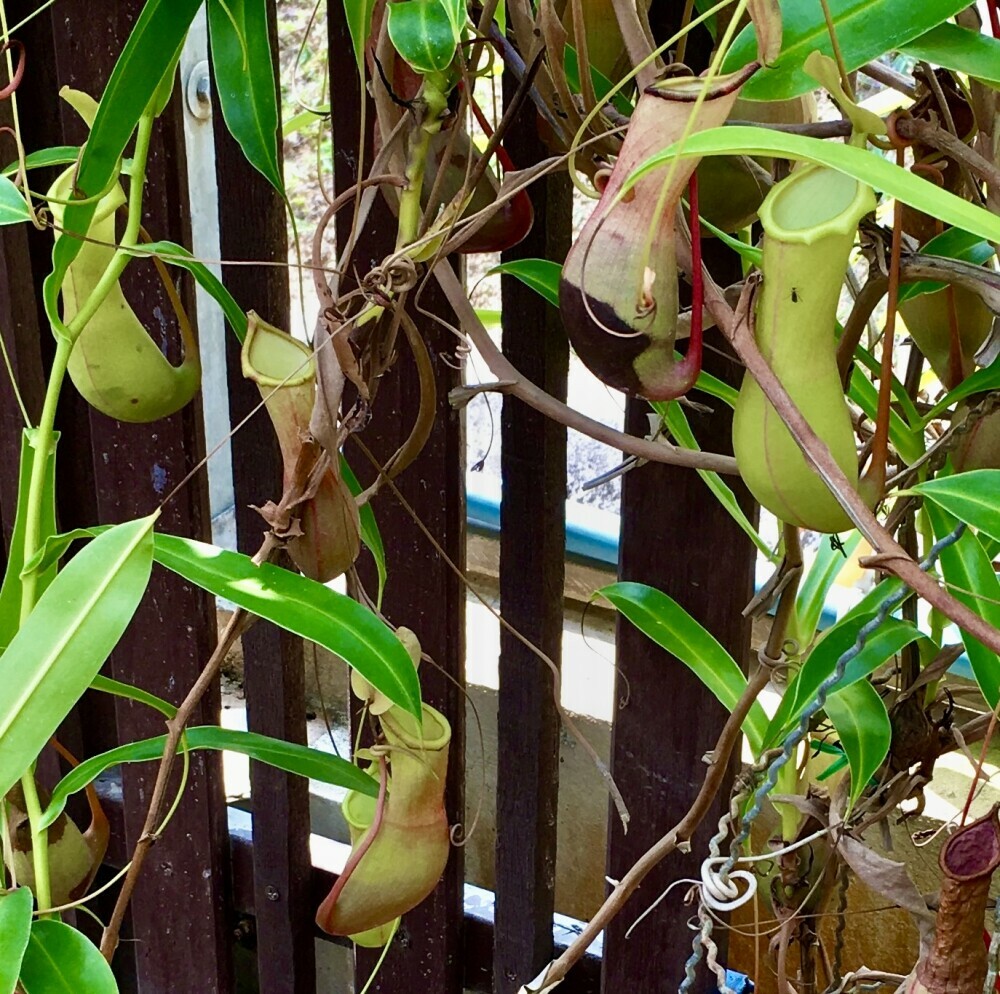 Tropical pitcher plant(Nepenthes mirabilis)
Tropical pitcher plant(Nepenthes mirabilis)
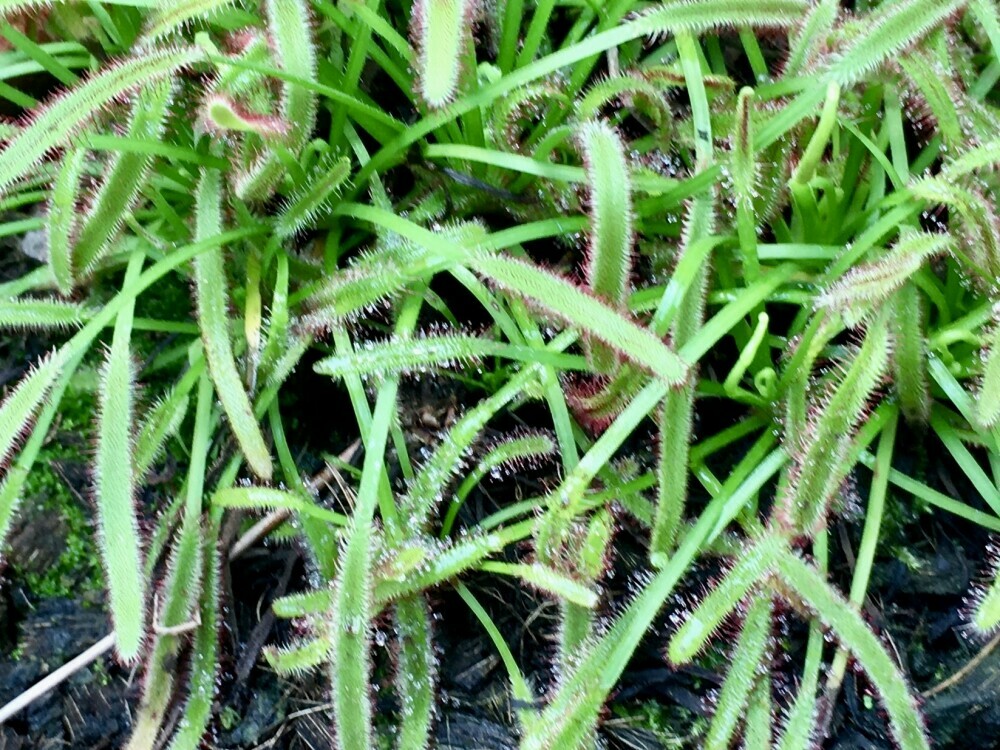 I miss my carnivorous bog plants.
I miss my carnivorous bog plants.
The water plants had rich amazing colors, and fit perfectly into our day in the gardens. I’ve been especially interested in water lilies since reading that Native Americans consider them fallen stars. I have three containers of water plants on our front porch now, with too many fish getting it on like the Easter bunny. There’s a population explosion of them. Free fish anyone?
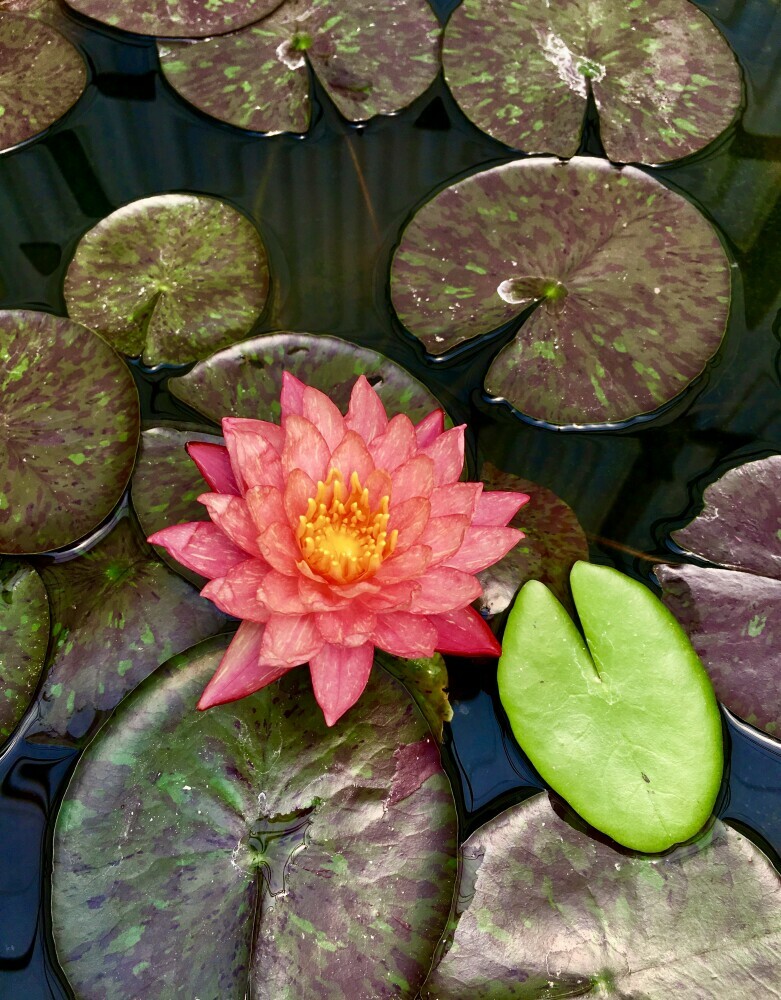
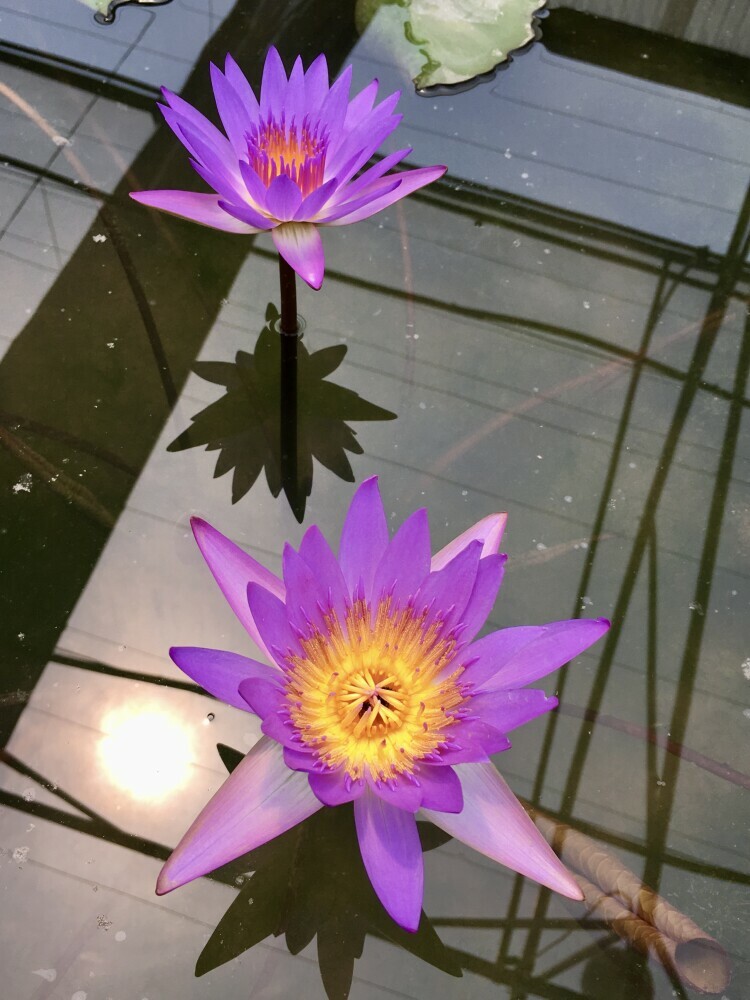
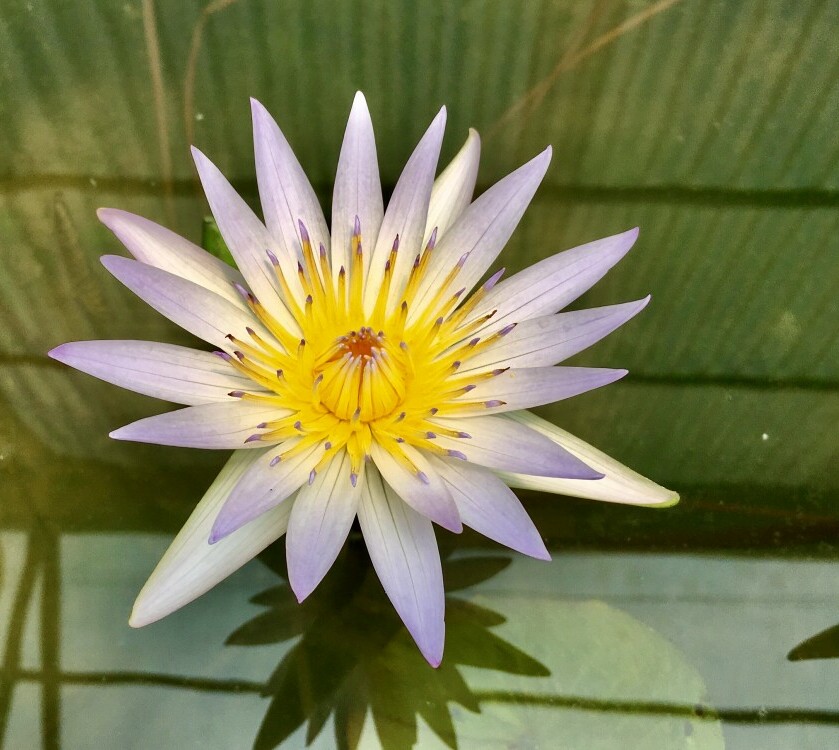
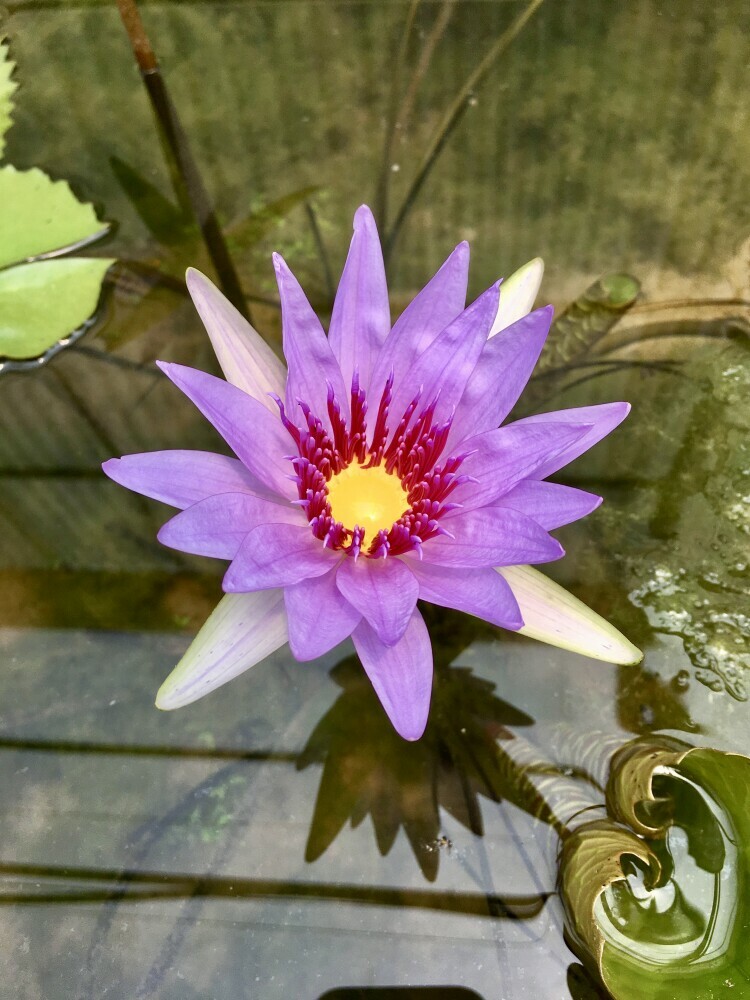
I think many of these water lilies were developed by Pairat Songpanich, a Thai water lily enthusiast, expert, and the man who solved a century-old puzzle to produce a hardy blue water lily. Thanks to him these colorful water plants are available to grow in colder climates, and are frost-hardy.
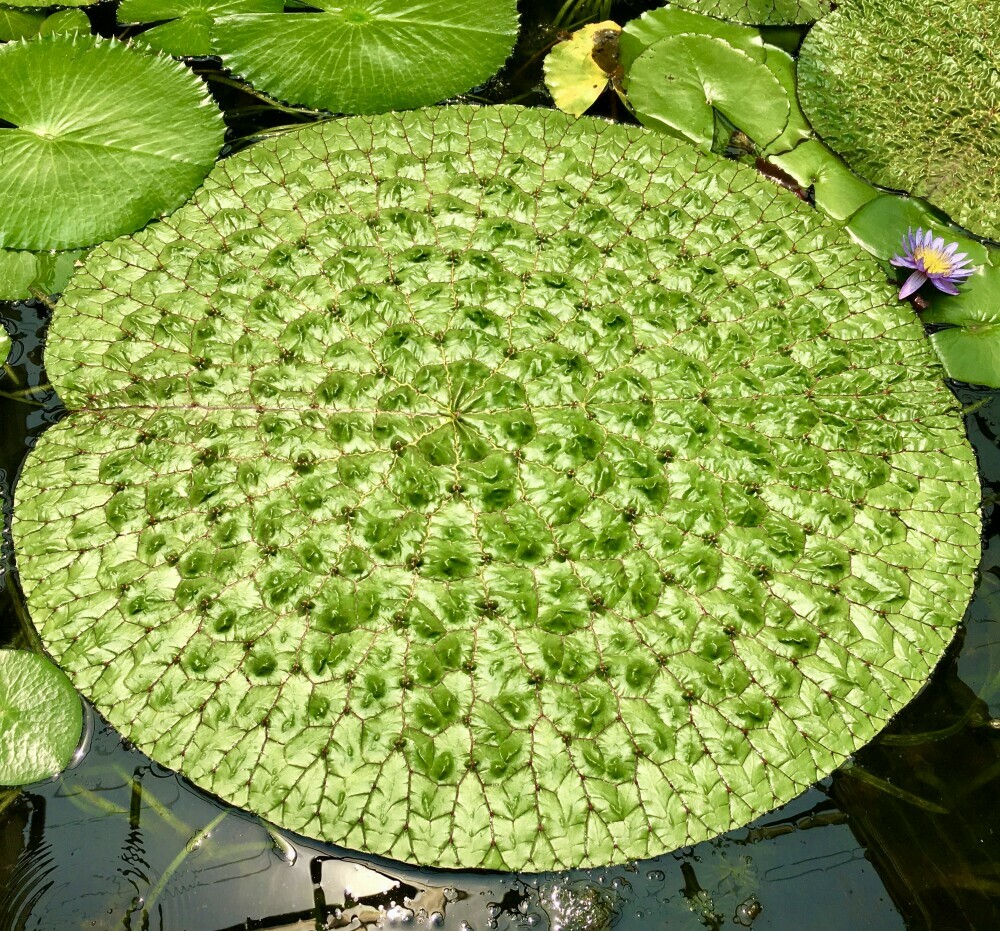 Where the frogs have their town halls. Hula-hoop-sized.
Where the frogs have their town halls. Hula-hoop-sized.
There were also some beautiful succulents and cacti to offer some balance with the water area.
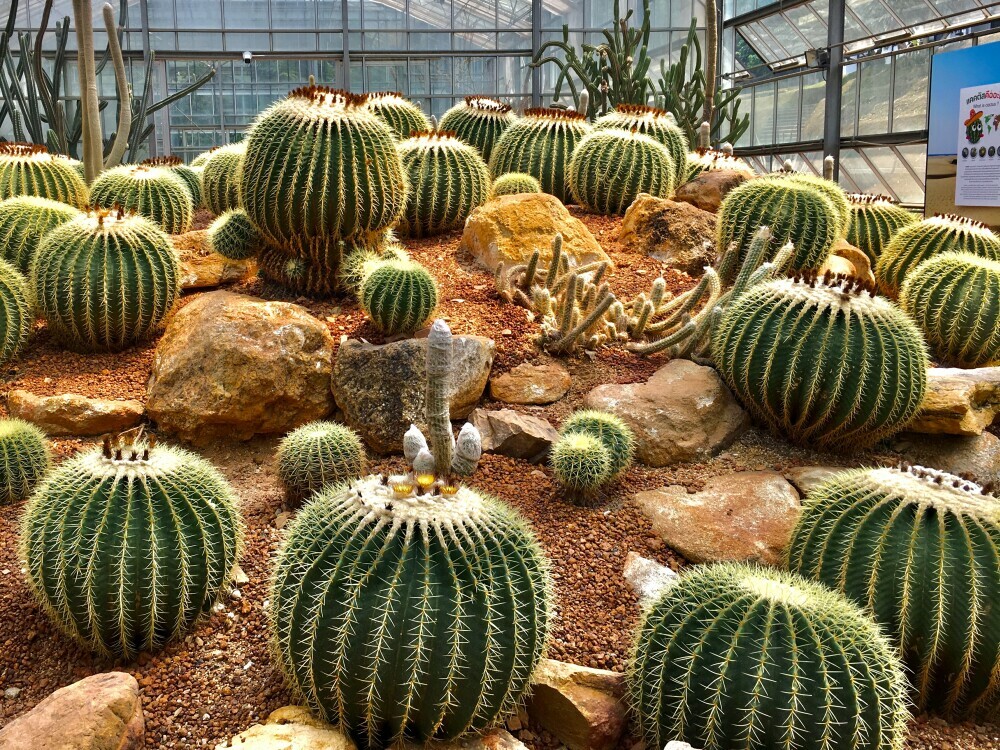 Cacti
Cacti
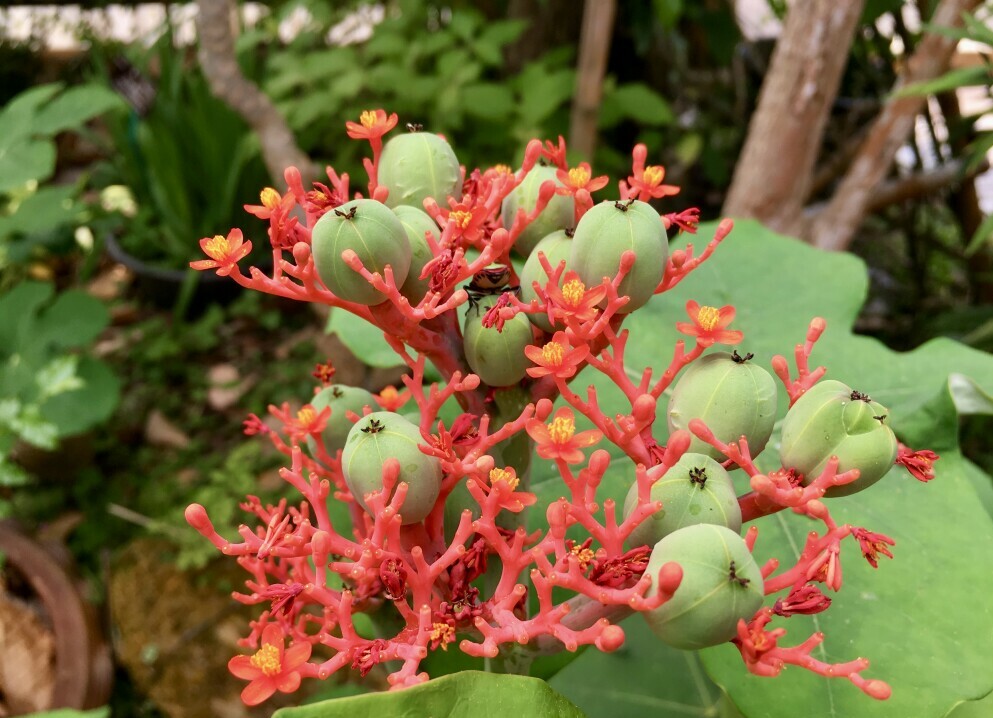 Buddha Belly Plant (Jatropha podagrica)
Buddha Belly Plant (Jatropha podagrica)
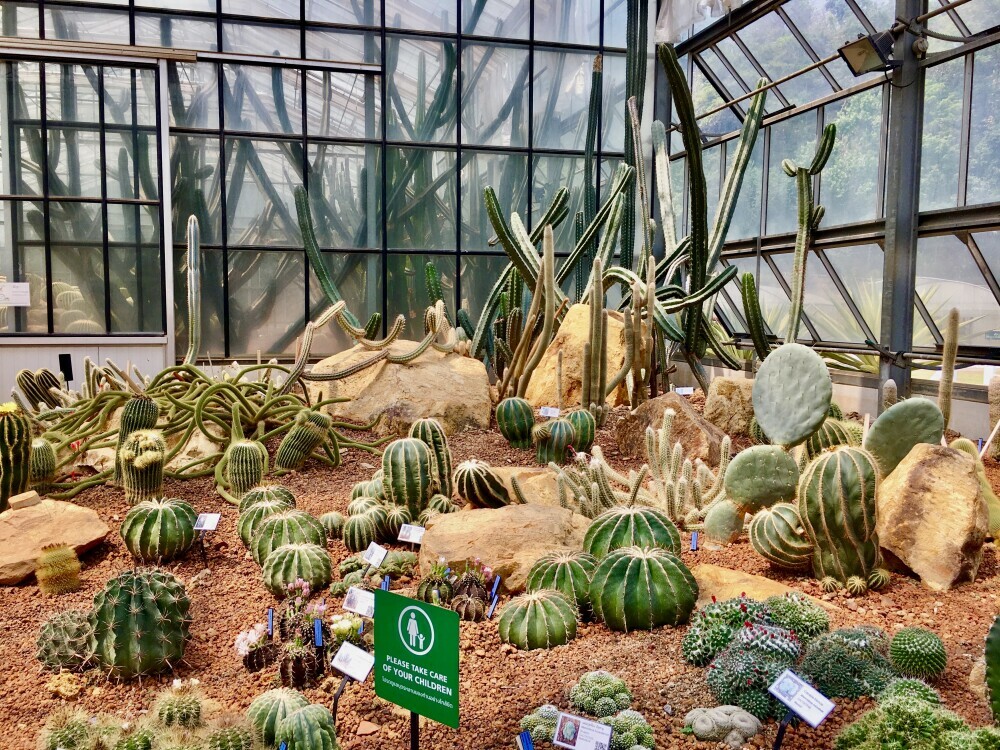 No sitting, please.
No sitting, please.
One thing that was interesting to me was that hydrangea is a rare and special plant here. They can only be grown in the mountains.
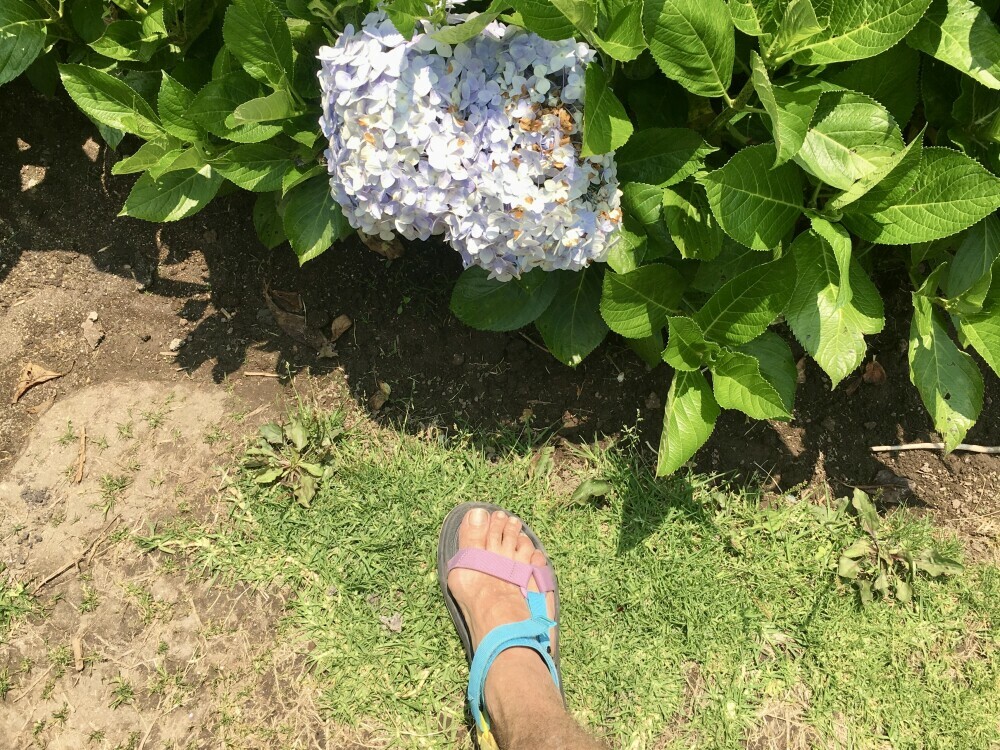 Try this hydrangea on for size.
Try this hydrangea on for size.
And orchids are everywhere. There was a unique and pretty wild orchid that only blooms this time of year. It was bright yellow and we saw it on lots of trees.
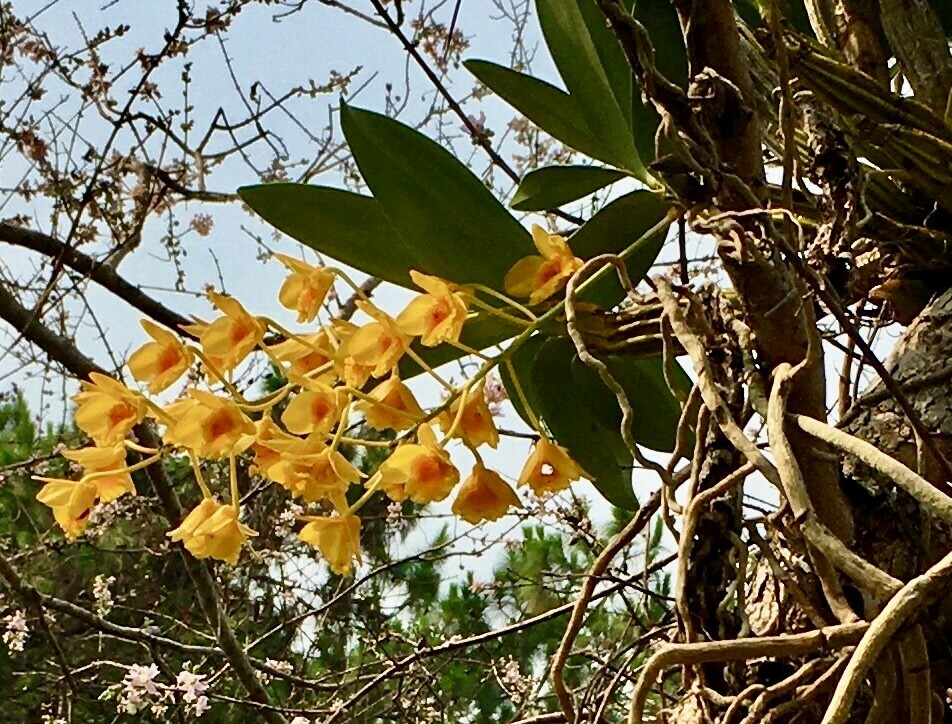 Here….
Here….
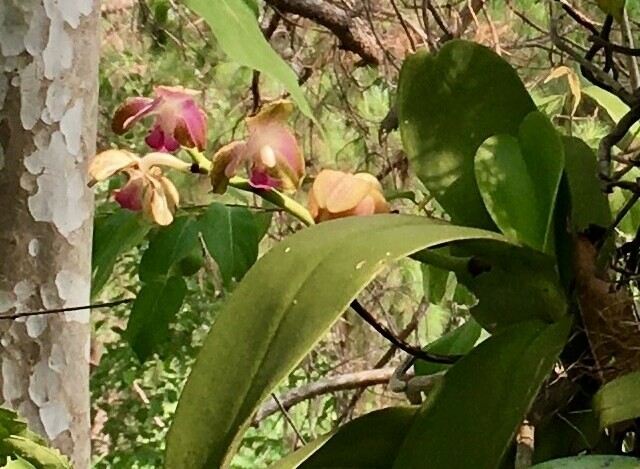 ..and there.
..and there.
 Banana blossom
Banana blossom
There is also a cool tree with a big sort of waxy magnolia-type flowers called a “Sala” tree. It only blooms this time of year… the time of year when the Buddha was born. We know because he was born under one of these trees. It is also the time when he was enlightened, also under a sala tree. And when he died because he lay between two of these trees when he died. At each of these important moments in the life of the Buddha, the Sala tree is blooming.
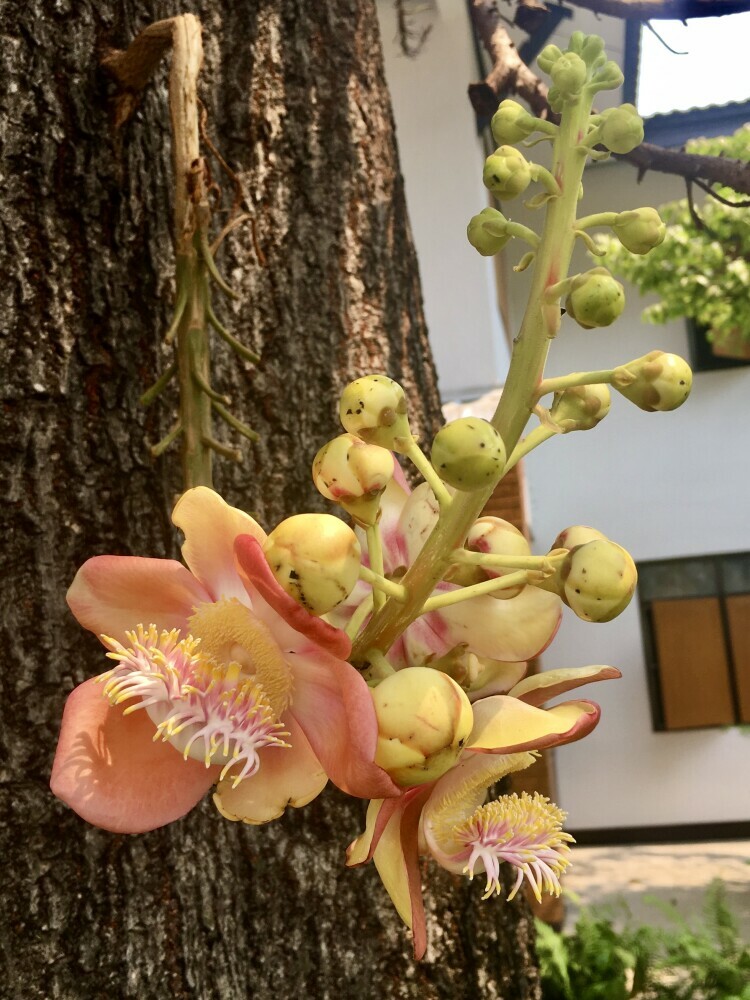 Cannonball Tree (Couroupita guianensis) fruit
Cannonball Tree (Couroupita guianensis) fruit
We went to another village called Mon Cham. It is an area where the farmers exchanged growing opium for growing flowers. In other seasons, we hear it is beautiful, with views overlooking fields full of flowers. That was not our experience. Thais vacation here during the pretty seasons, in the semi-permanent tents that dot the hillsides. This is another place we want to come back to see when it is at its peak. Chiang Mai is a one-hour flight and $150 per person round trip, so we will go back for a long weekend or split a week between there and Chiang Rai next fall so that we can see these places when they are beautiful, with clear views and green fields of rice.
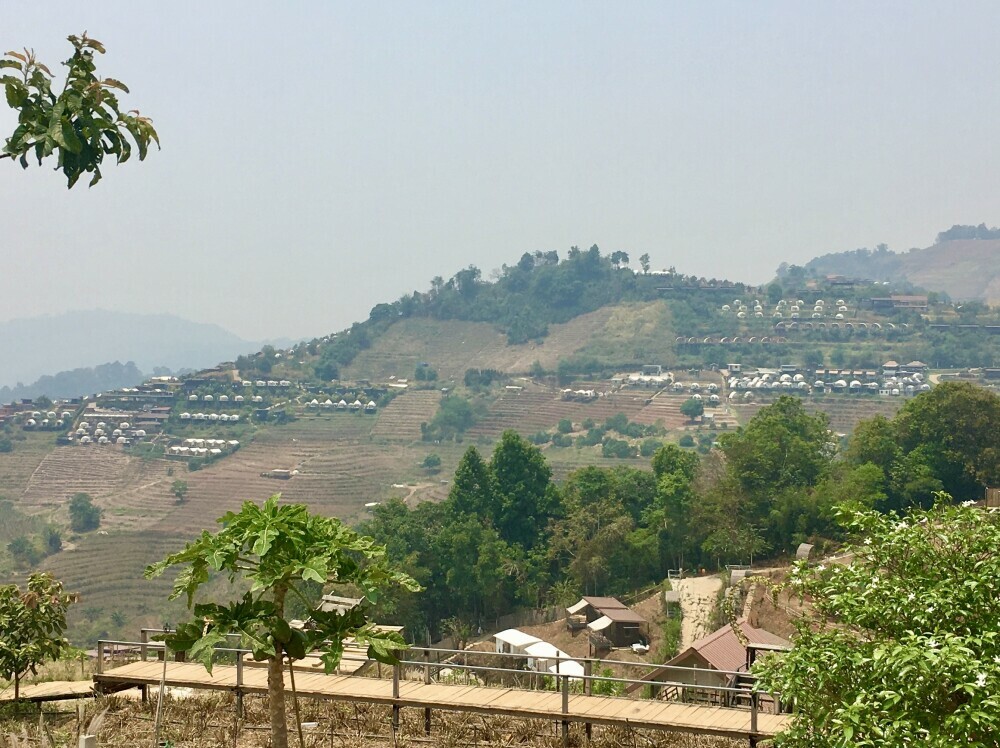 Tourist glamping In the distance.
Tourist glamping In the distance.
We came back to the city and had the signature dish…Khao Soi at a local favorite. Khao Soi is a spicy, rich noodle soup with chicken or beef. Although famous and quite tasty, it’s not our most favorite dish. That said, it is still totally worth getting a bowl.
Songkran:
Thursday was the actual day of the Songkran holiday. When we returned from lunch, we put on bathing suits, shorts, and Songkran shirts then we went for a walk, up and down our street. We went to the main square and had some coconut ice cream…a new favorite…and watched the beginning of a very loud concert before heading back. The biggest, noisiest, wettest crowd was dancing in front of the bar next to our hotel. They were fun to watch and things were quiet by midnight again.
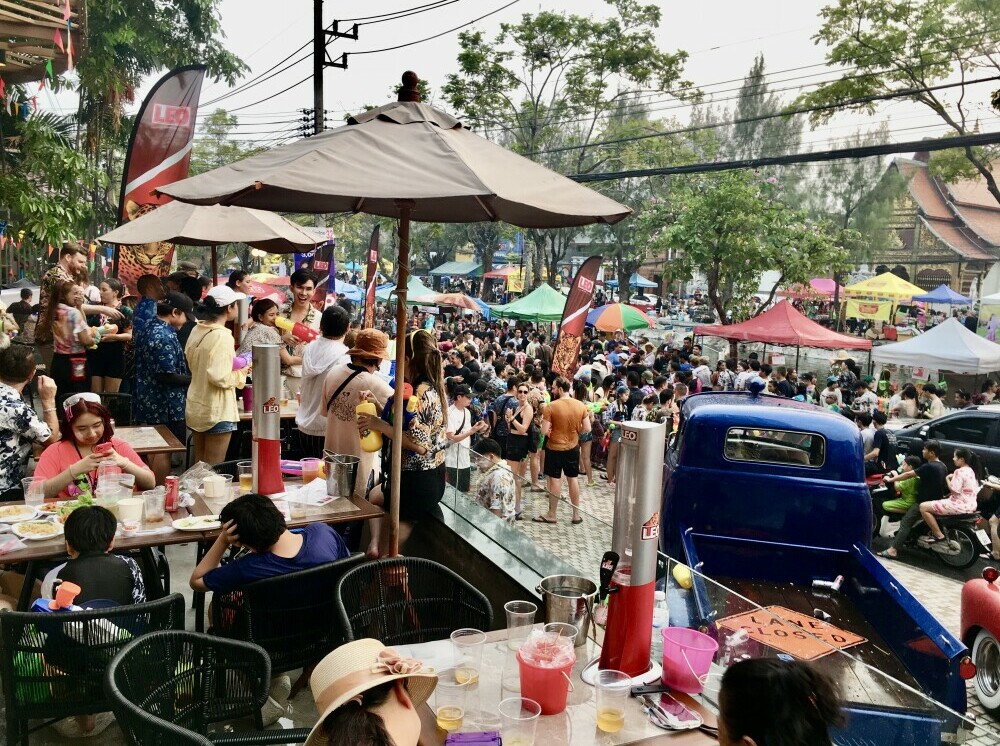 Front of our digs.
Front of our digs.
The water festival just made me smile. The whole country was out celebrating in such a fun, collective way. Entire families, 3 generations worth, riding in the back of trucks throwing water on each other, or squirting squirt guns. Nothing mean-spirited. It’s 100-110+ degrees in the sun. Hot! The water feels great. And the purpose is to bless each other and offer a clean slate for the new year. It also calls in the rain. The rainy season usually begins within a couple of weeks. Everyone was having a blast. When someone dumped cold water on you (some of the restaurants were using ice water!!!) you’d turn to say “Thank you, Happy New Year!” They would smile and wave.
https://todddyprints.com/songkran-the-worlds-biggest-watersplash-fightwho-in-their-right-mind/
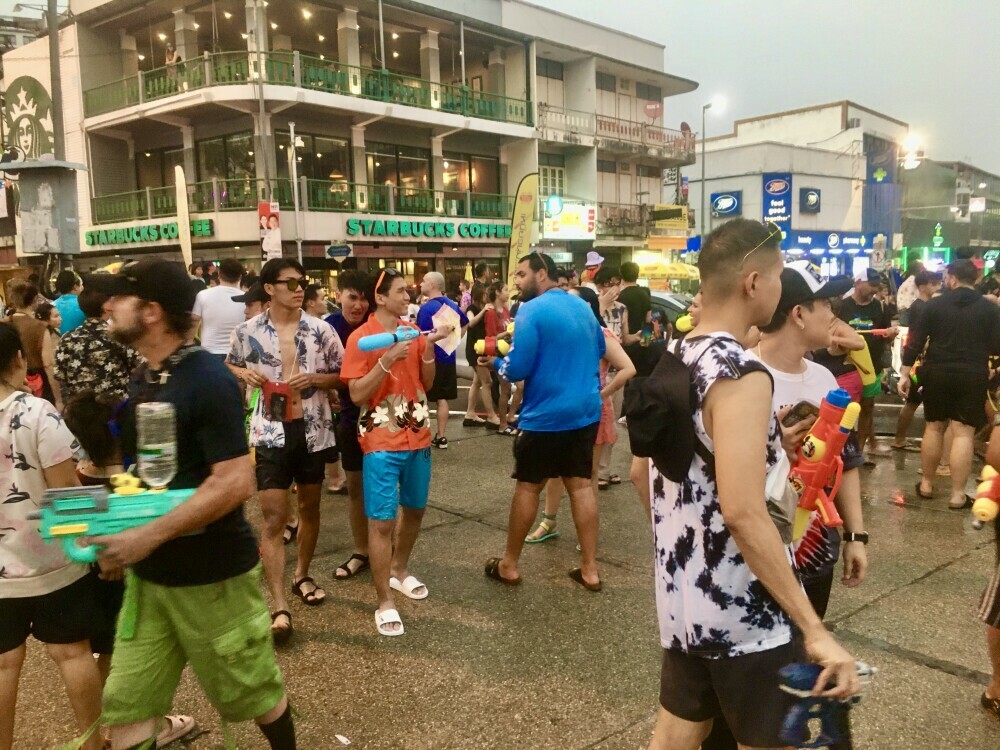 Wild west.
Wild west.
On the last day, we got up, packed, and read in our room for a while before heading to the airport. We could not go out without getting soaked. The festival was in full swing again by 10 am. We watched out the window when the crowd reacted to something but decided to stay dry before our flight.
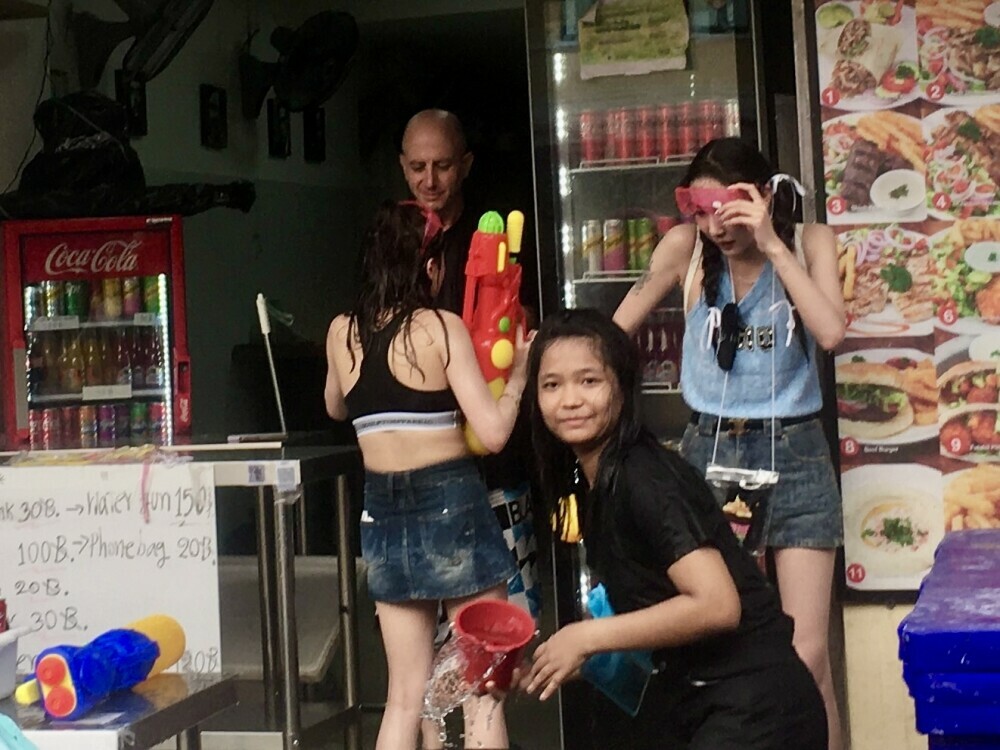 Picking on me!
Picking on me!
In Conclusion:
The idea of visiting Chiang Mai had been on our minds for a while. Recommendations from people we were meeting, including some who used to live there made it a place we were particularly interested in seeing. As I mentioned earlier, we weren’t there at the optimal time to see the color and verdance of the wet season. The smoke was also an issue with the time of year we chose to visit, but even with that, it was a wonderful exploration of the area. Chiang Mai is a true must-visit place in Thailand. Just choose your dates wisely. November to February are the ideal months to visit.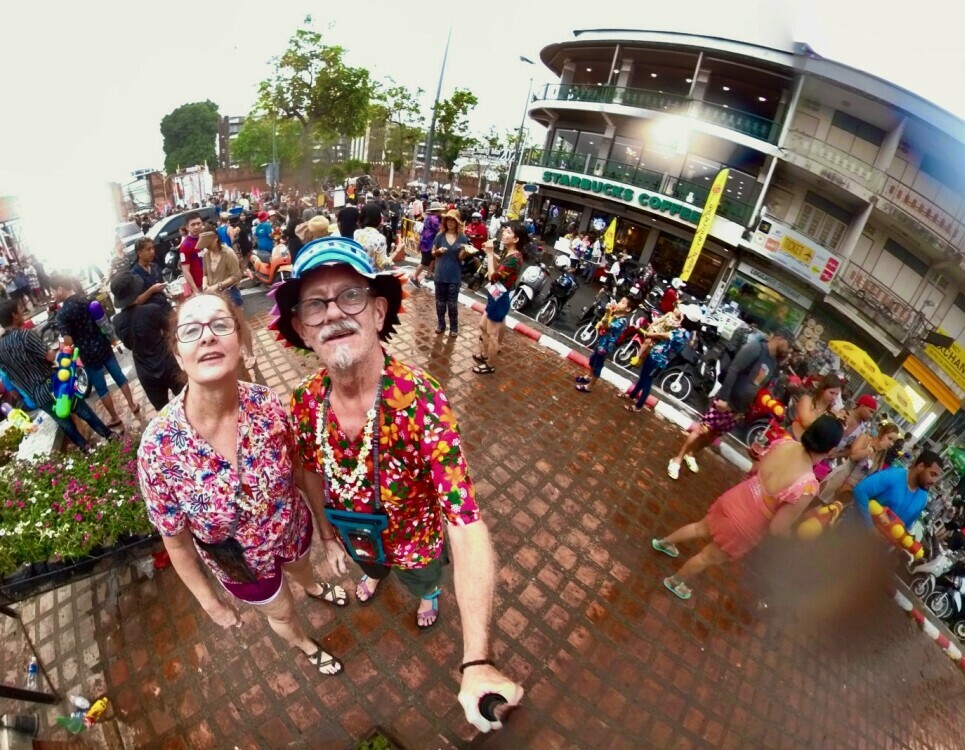
Please leave a comment or ask a question. I’d love to hear from you.
Safe Travels and Remember, Leave Slowly and Come Back Quickly!

